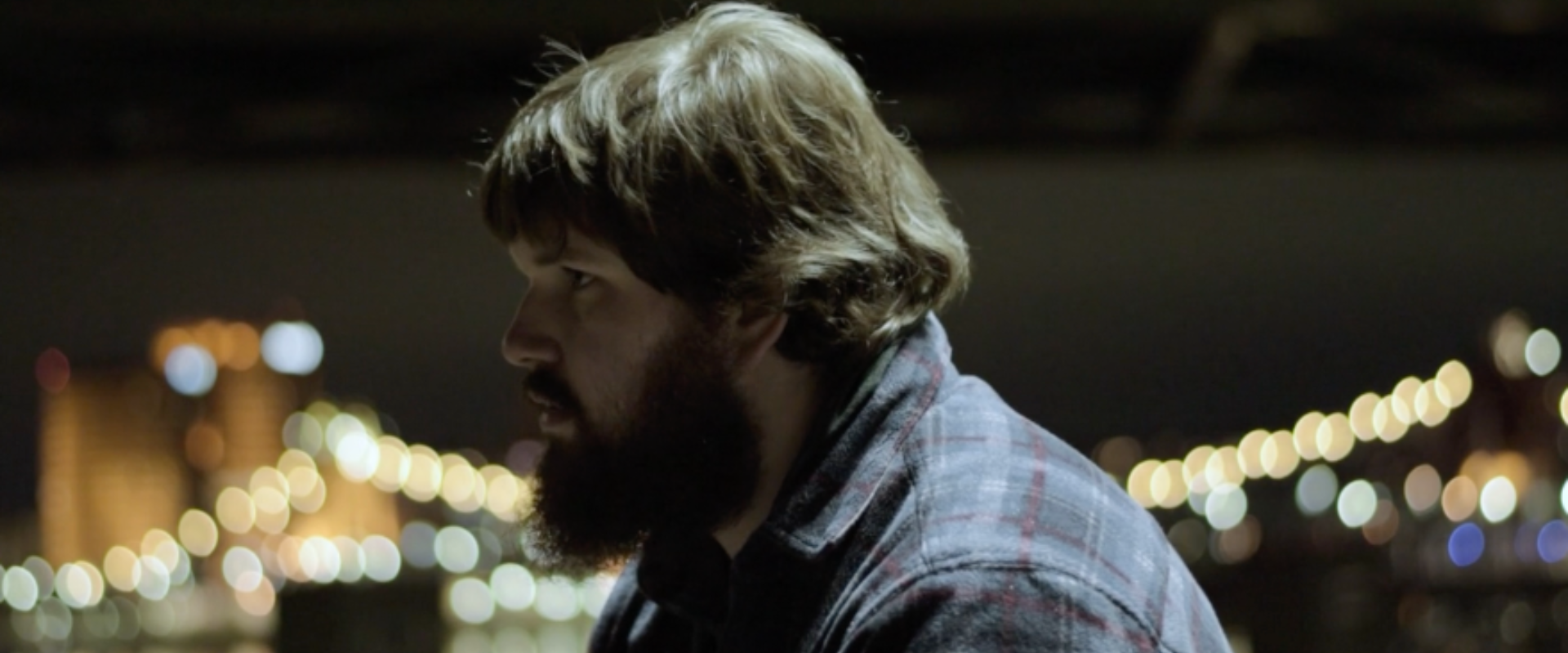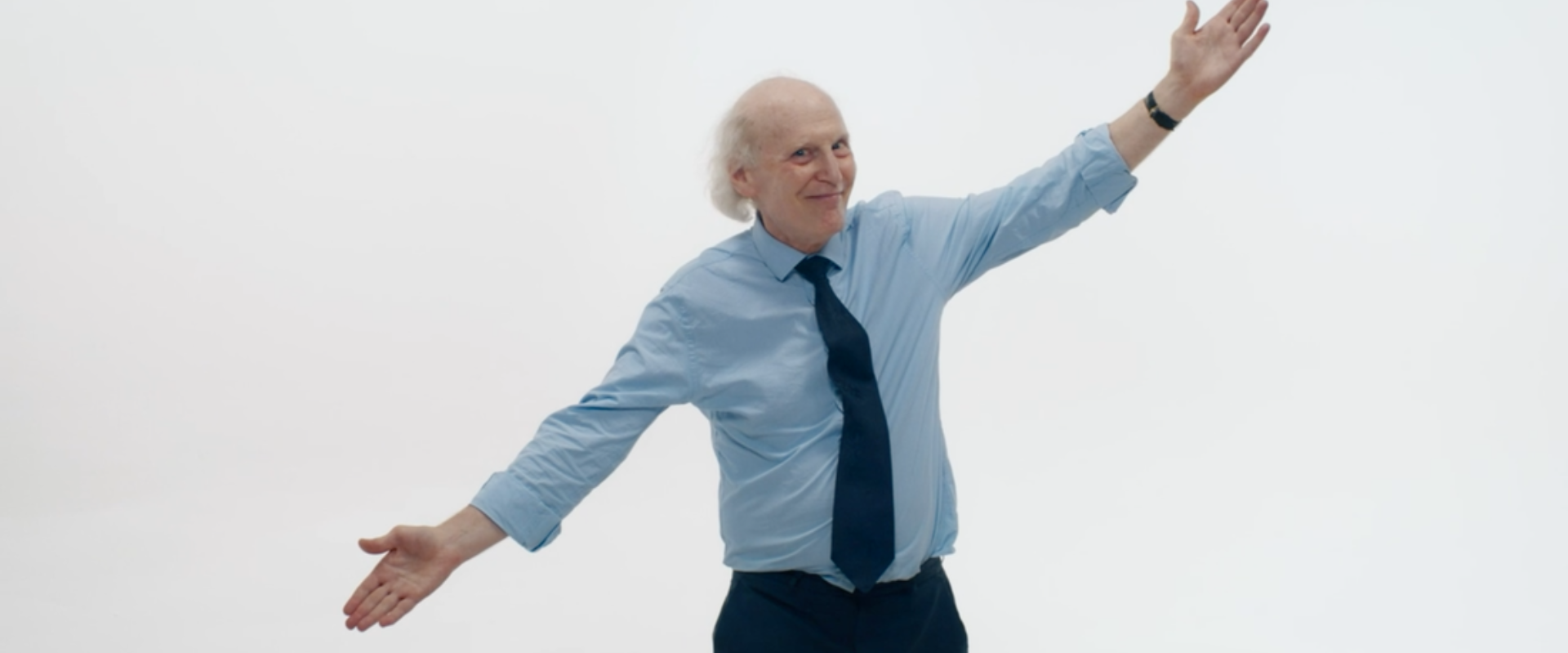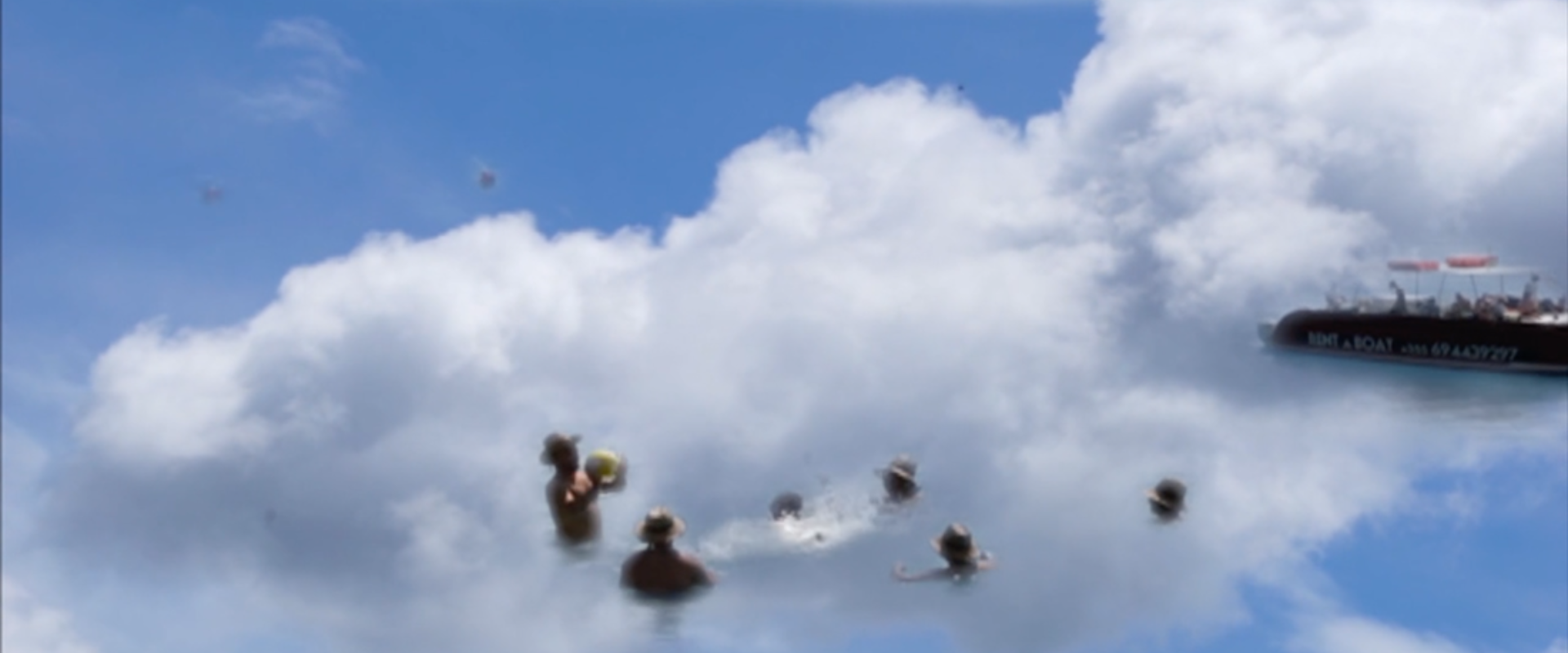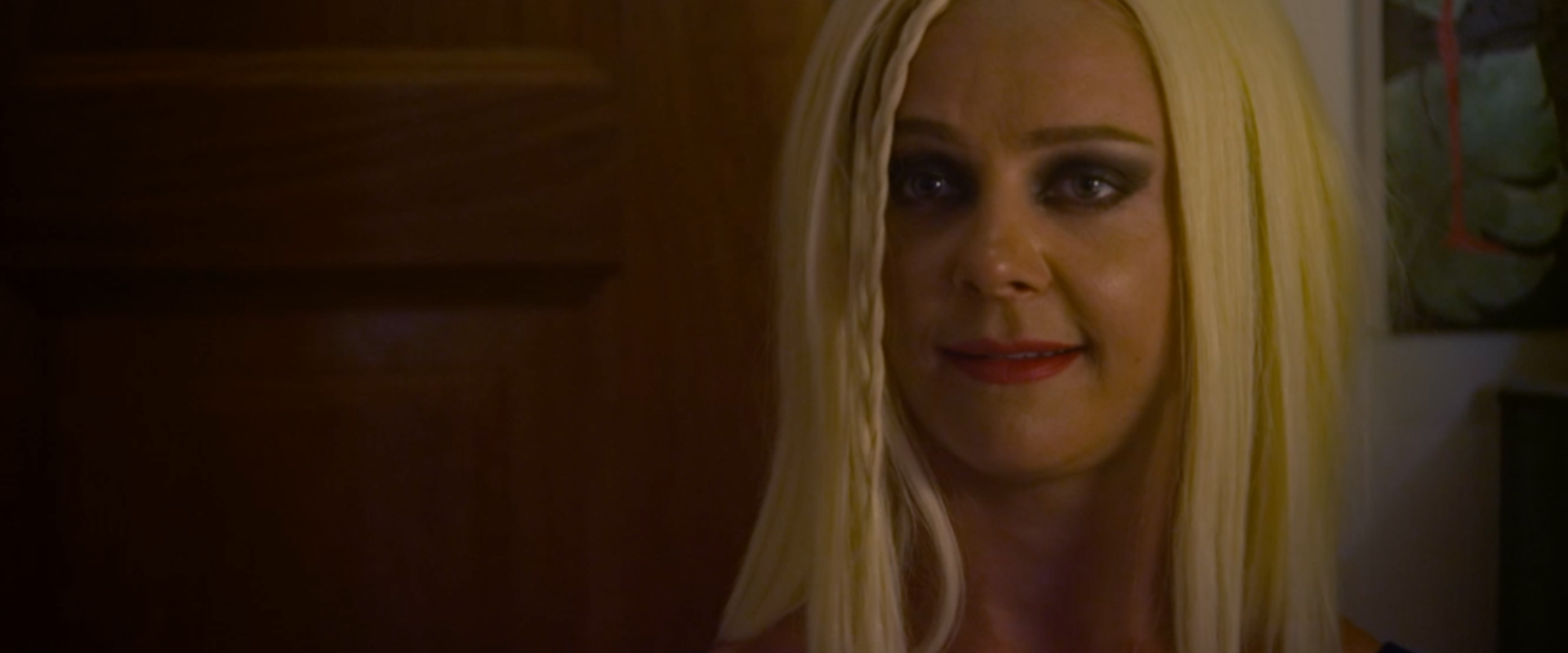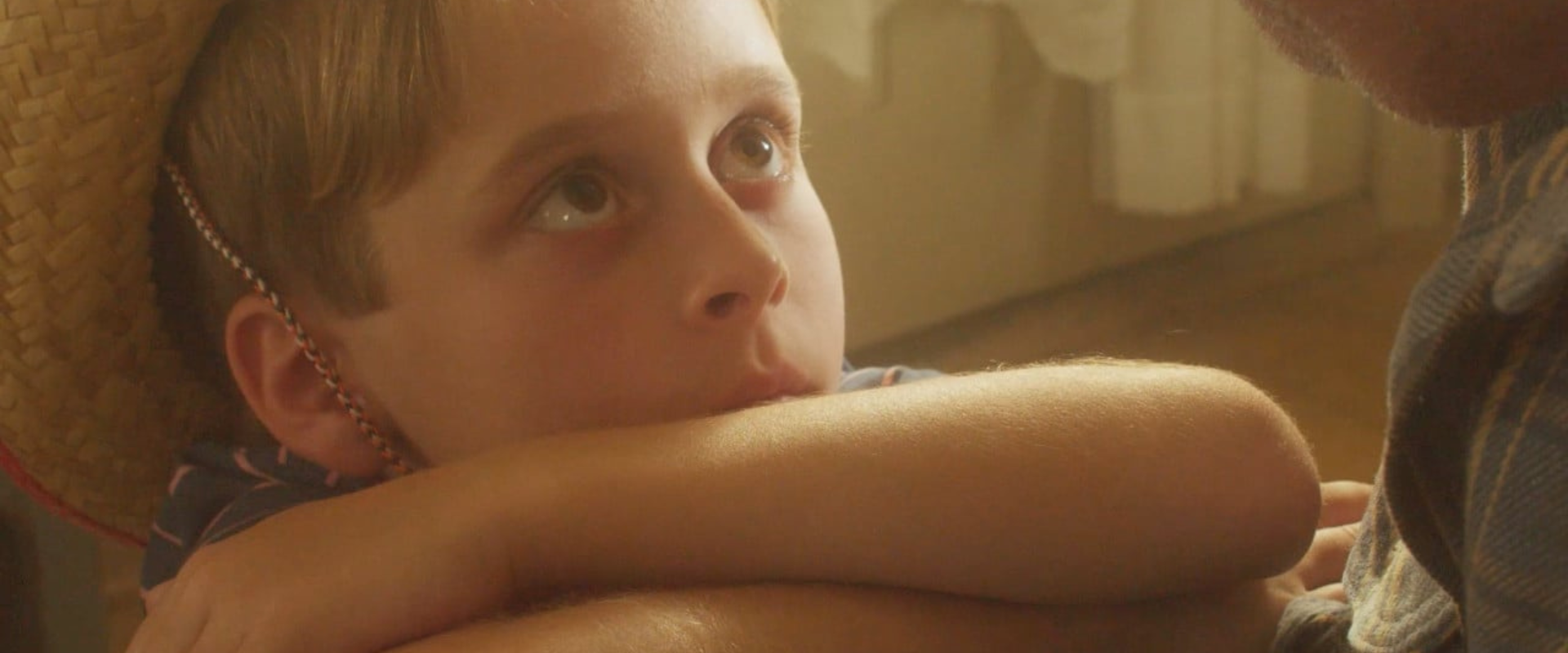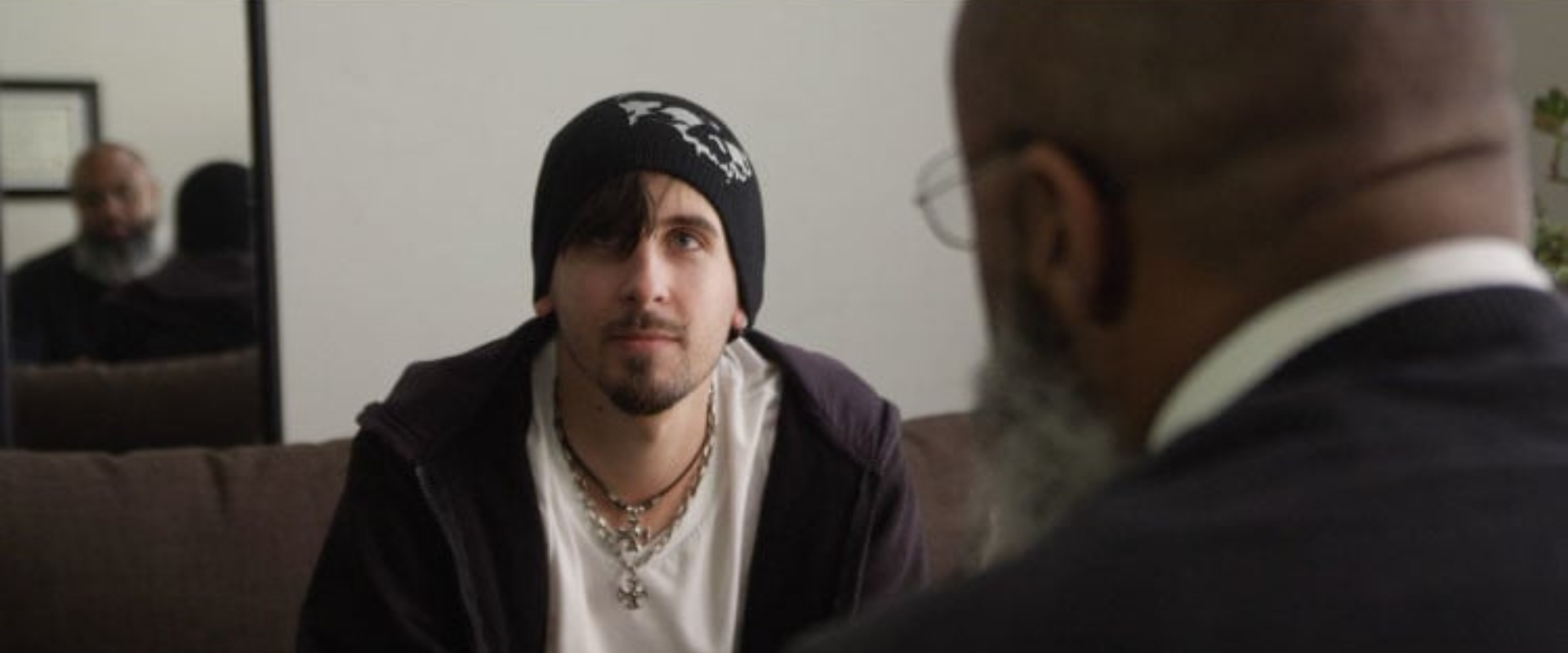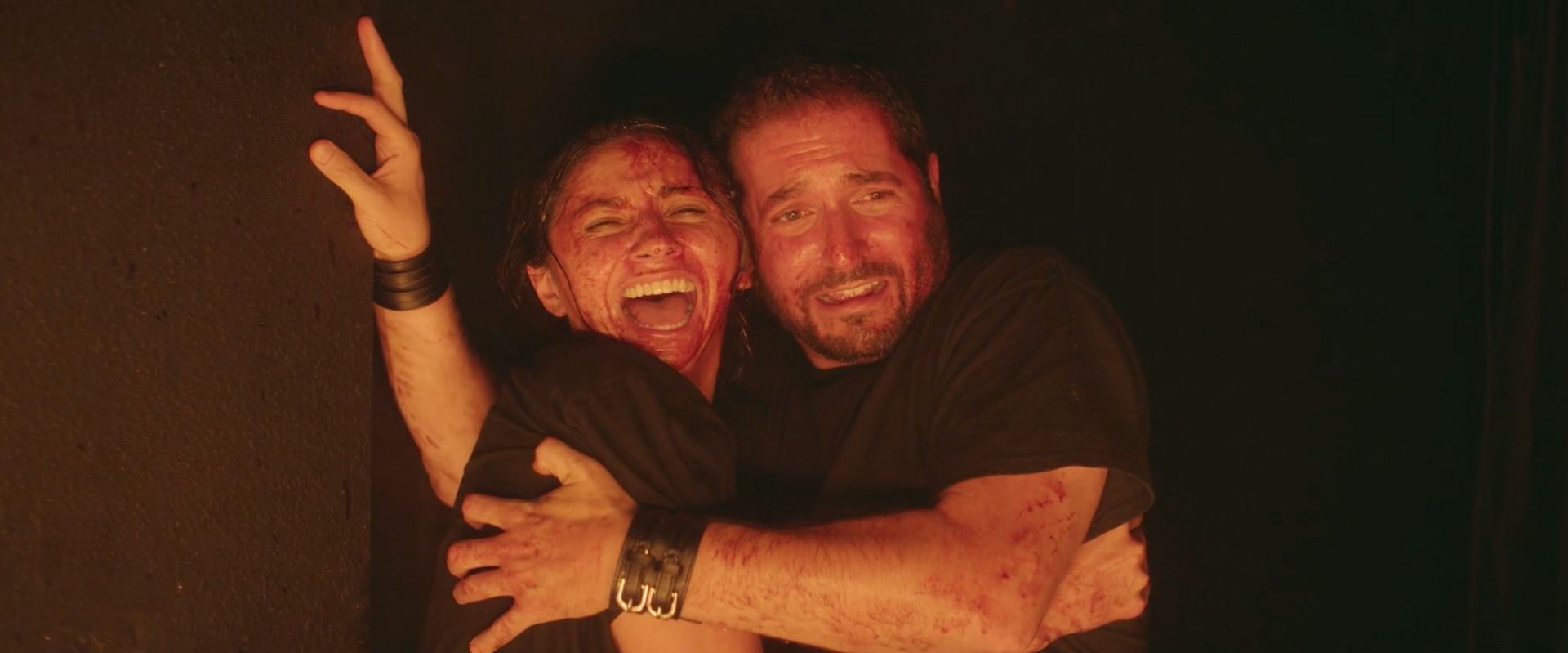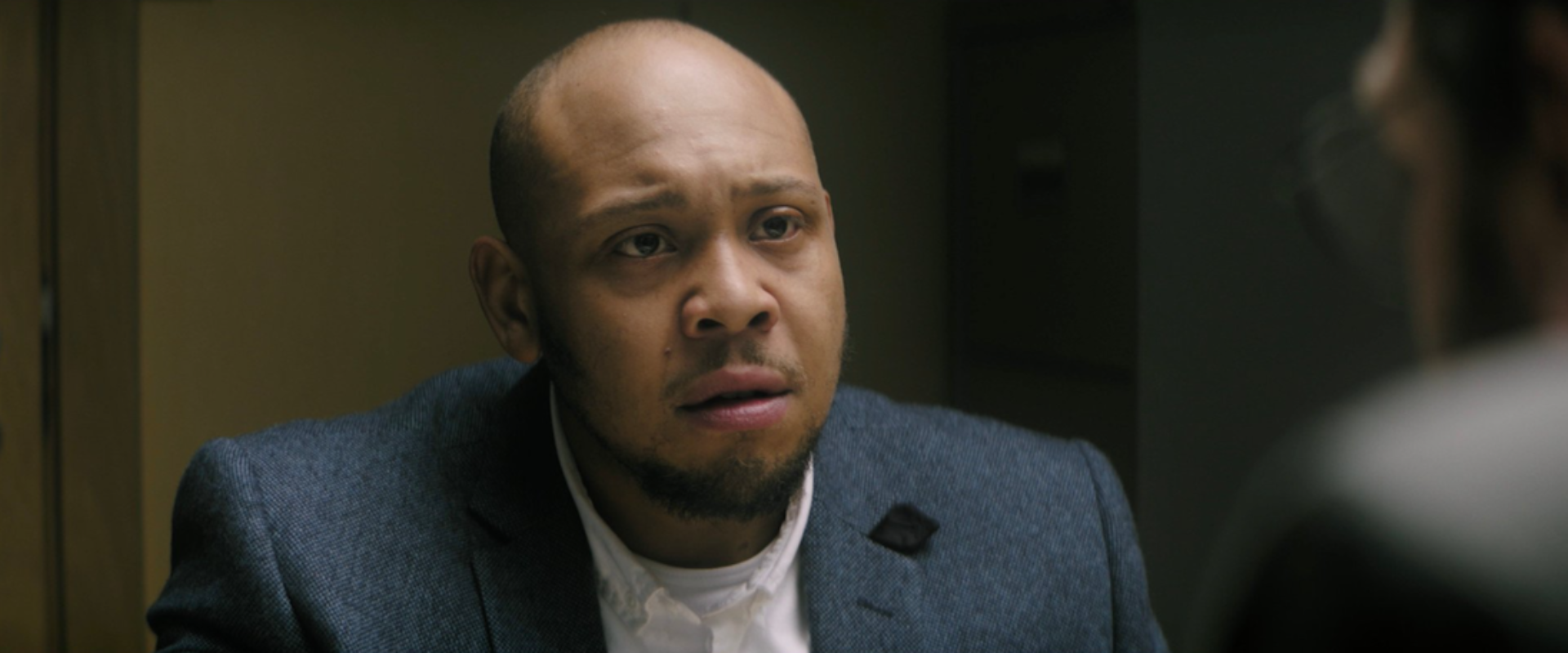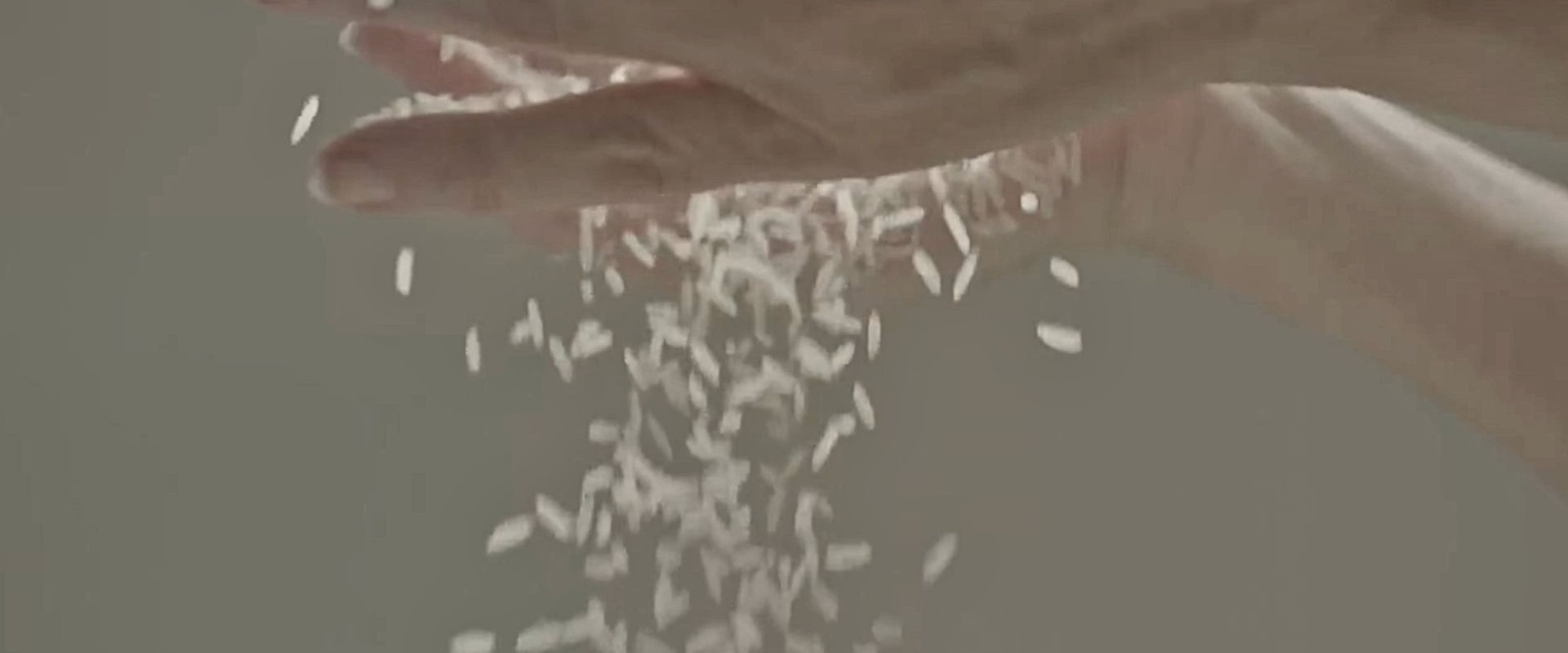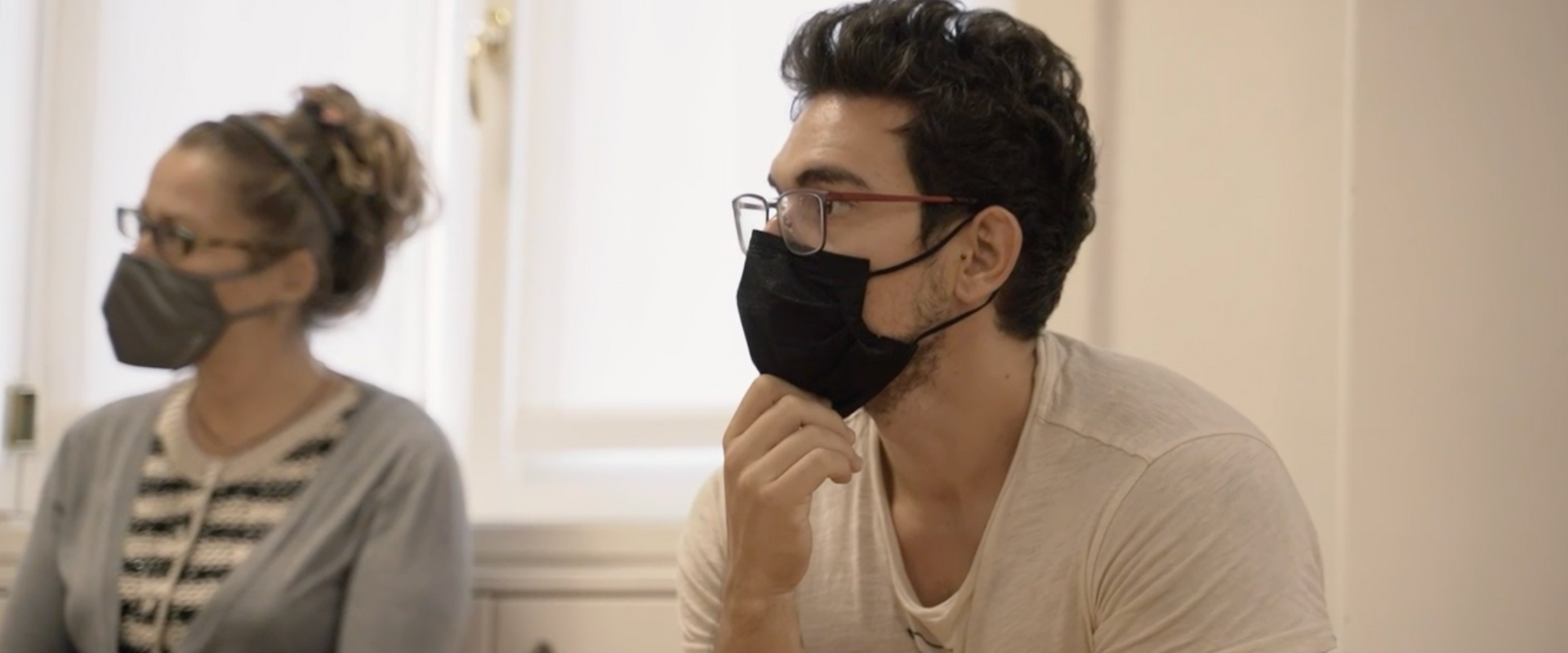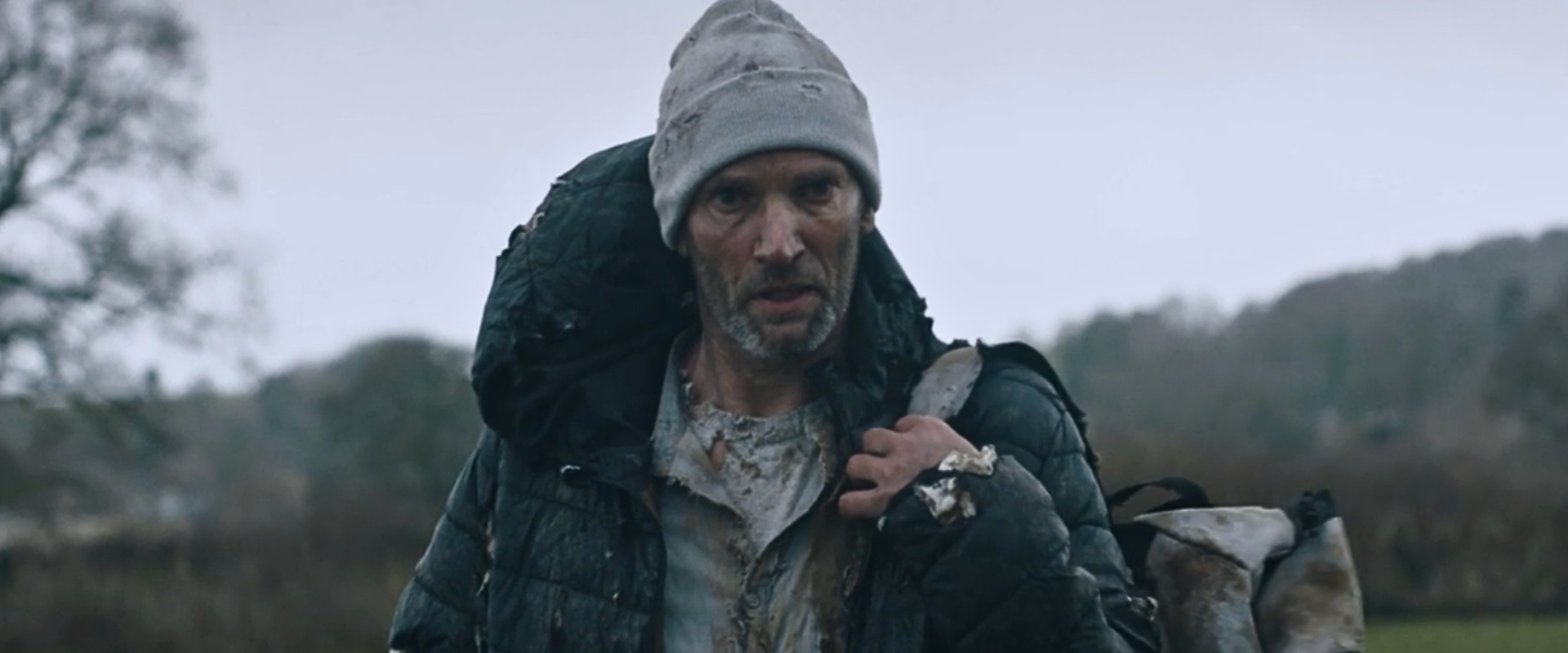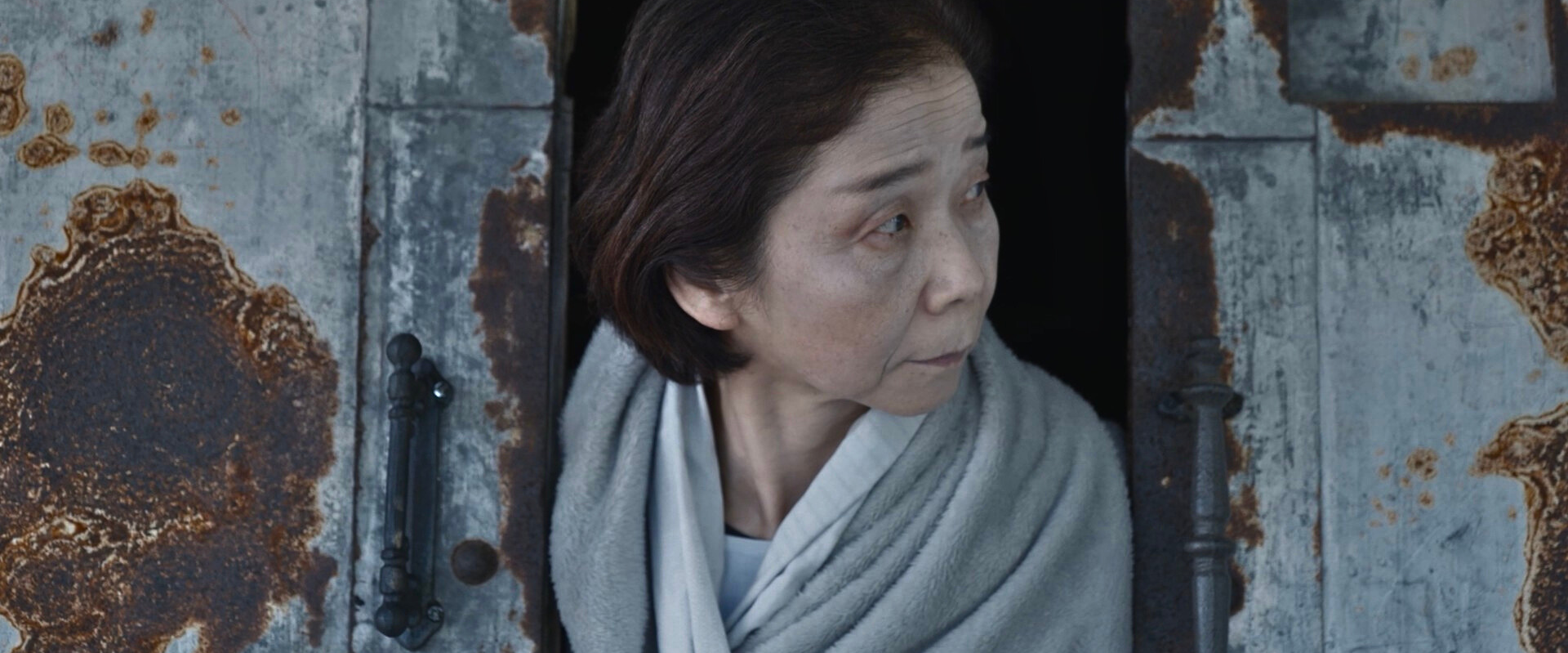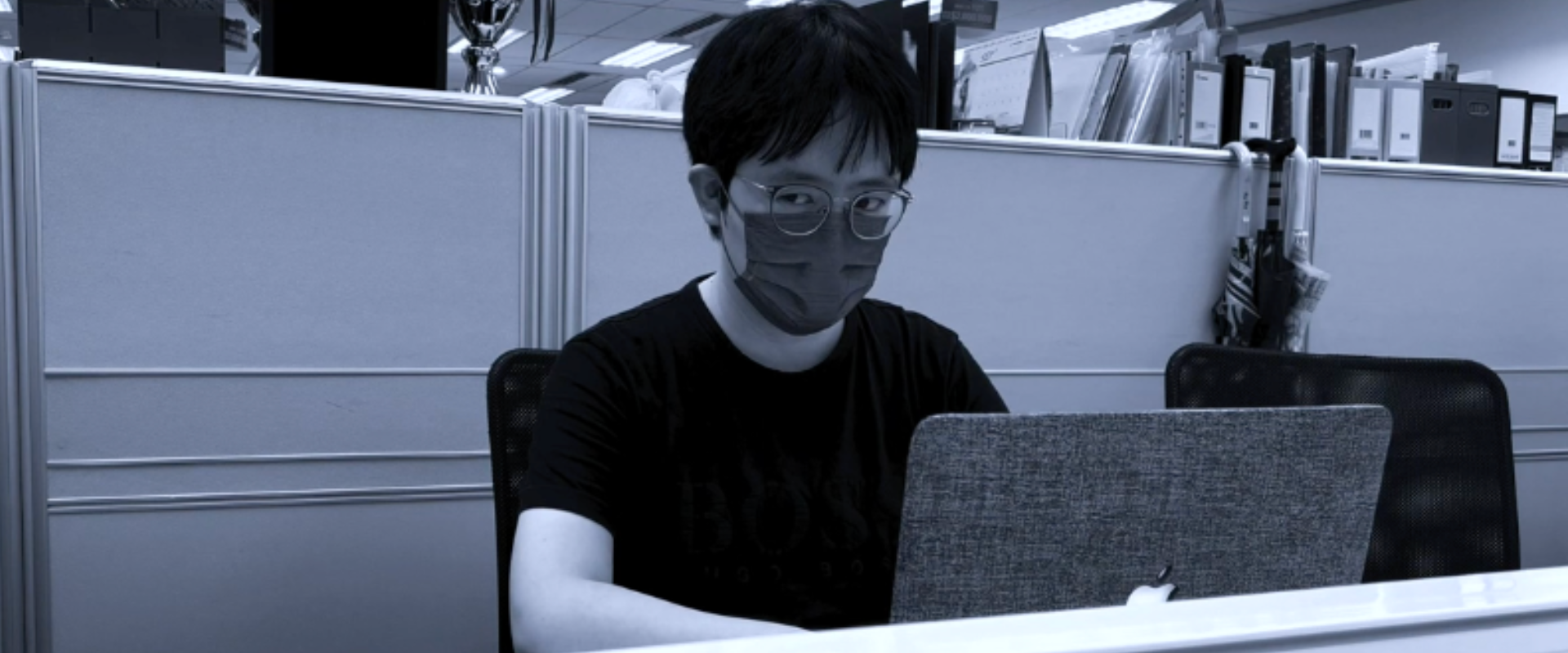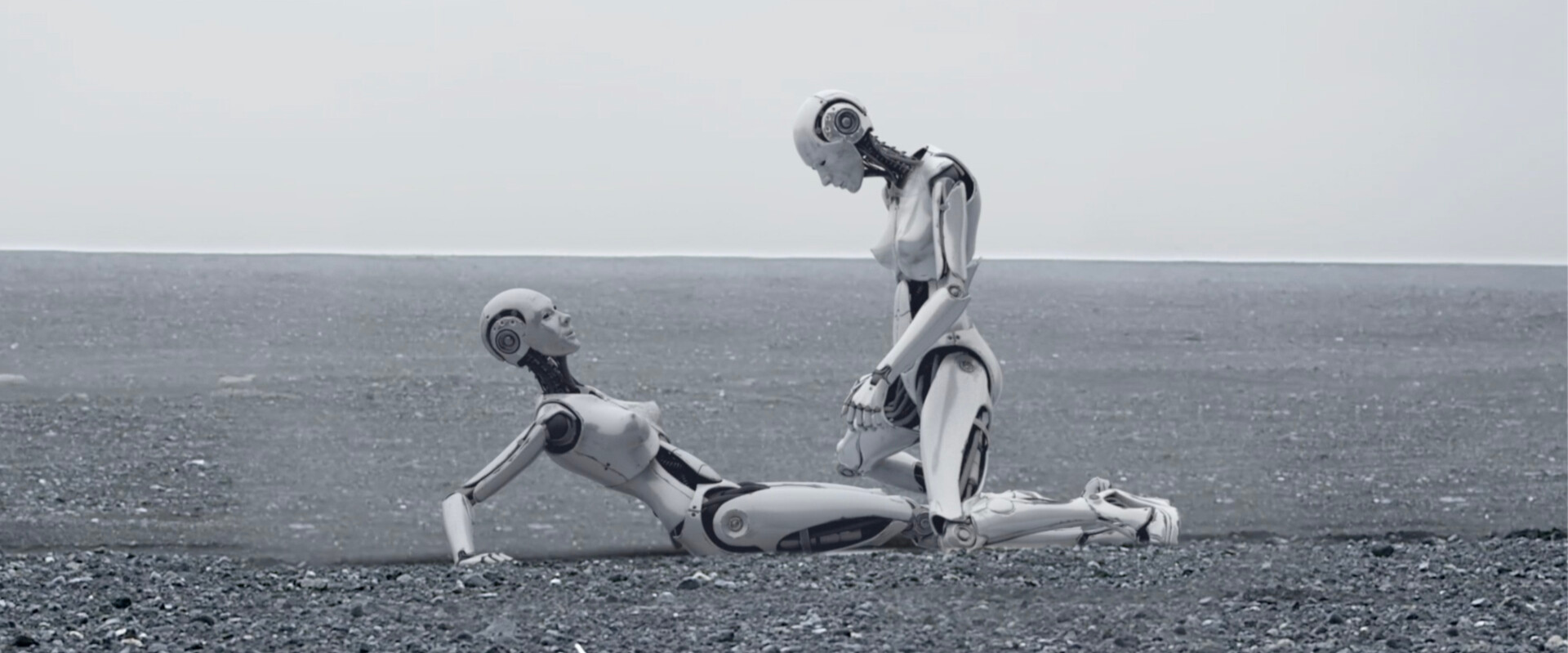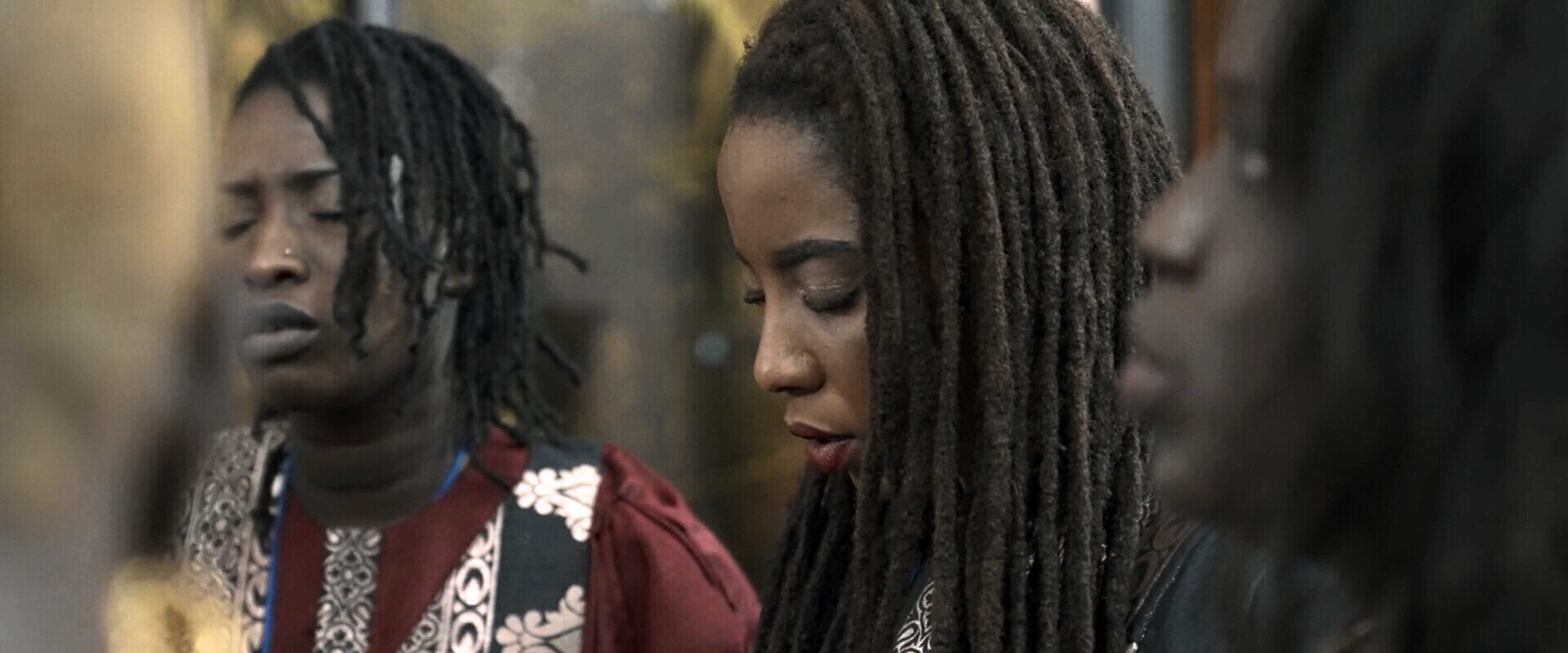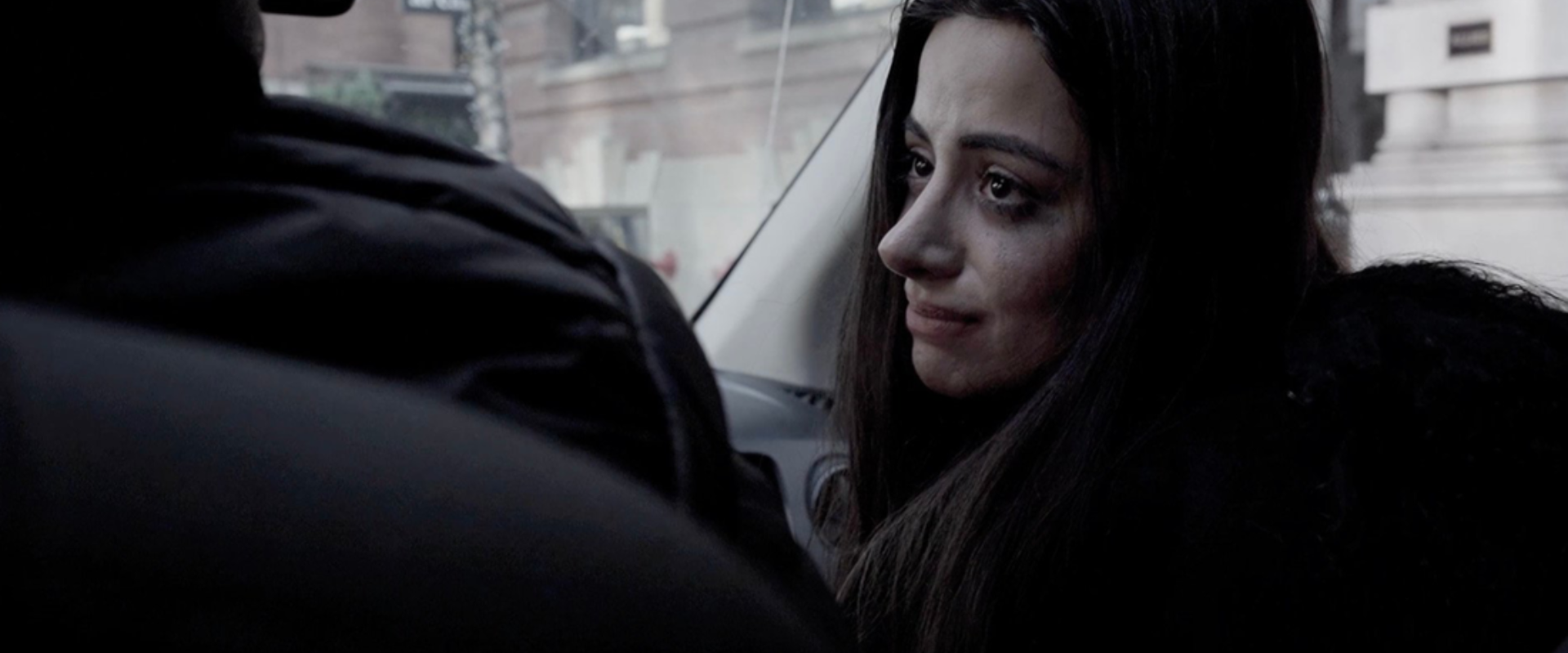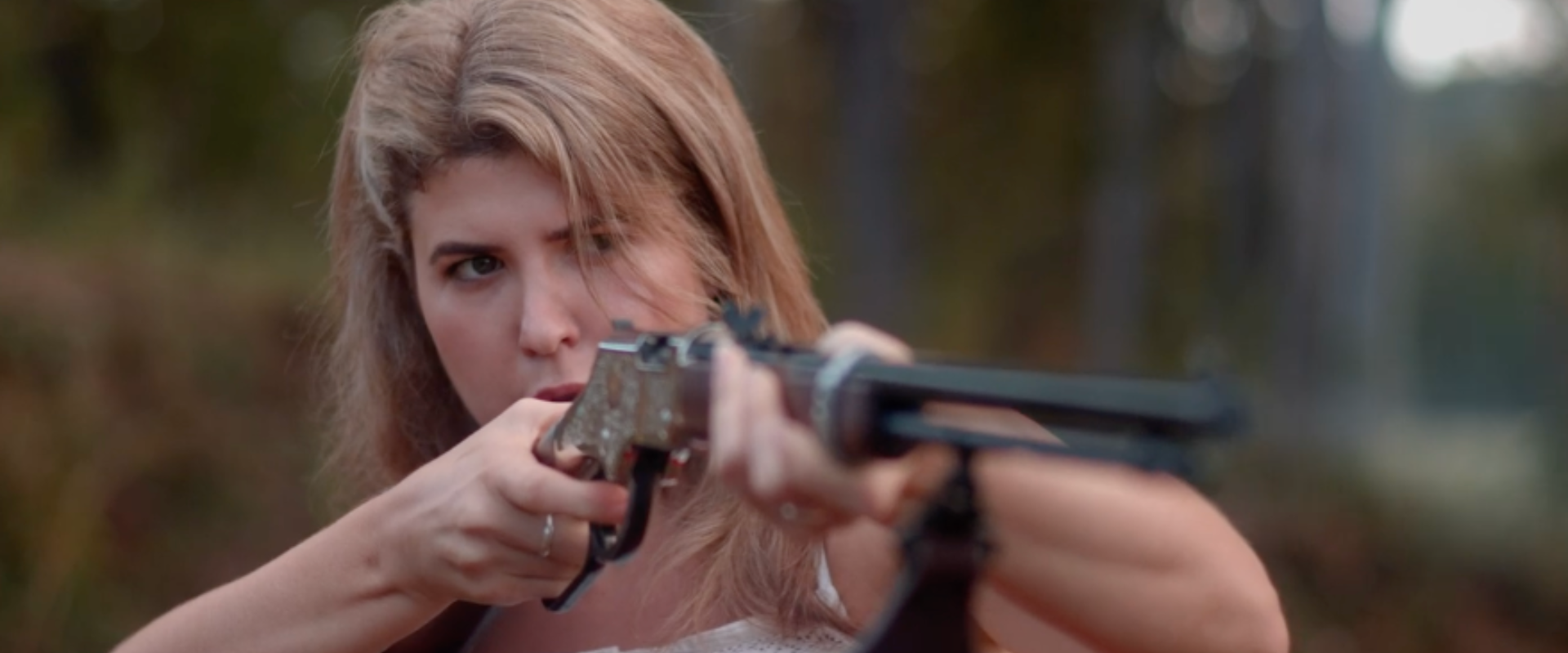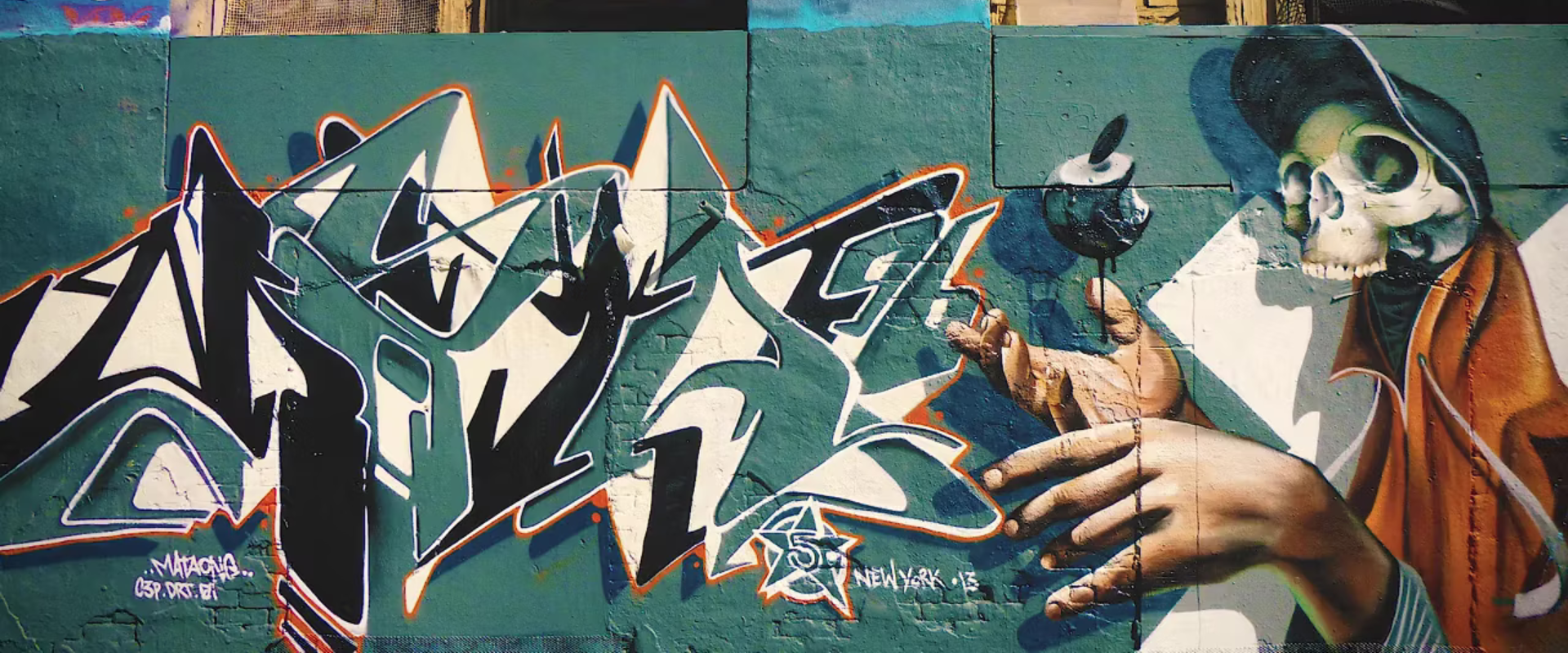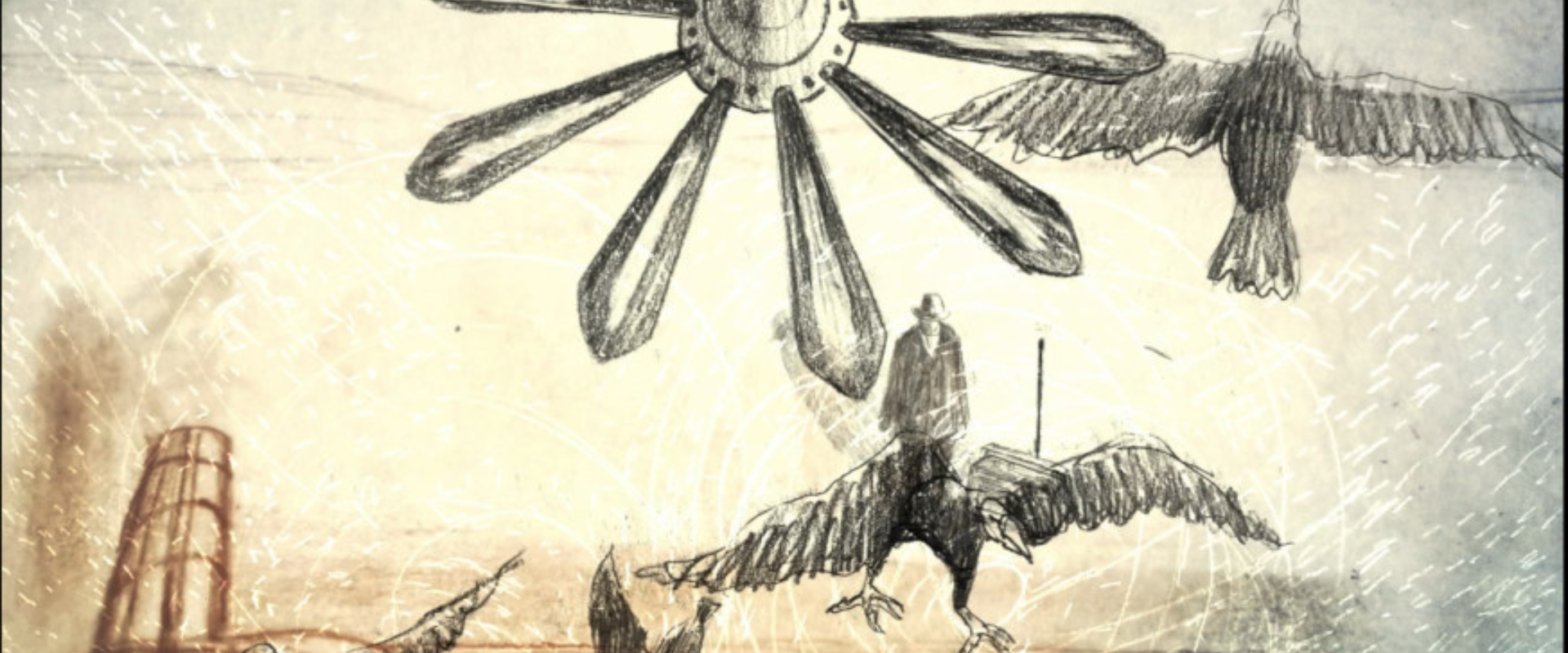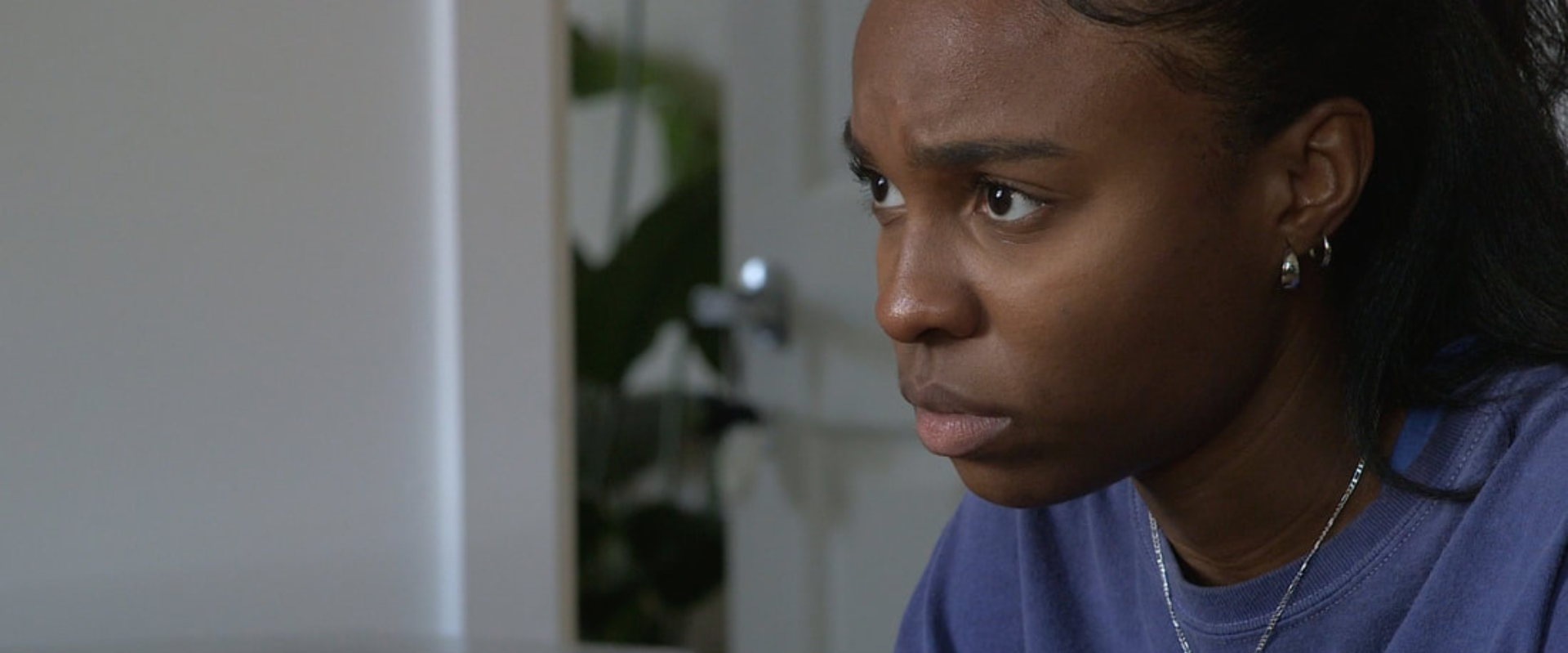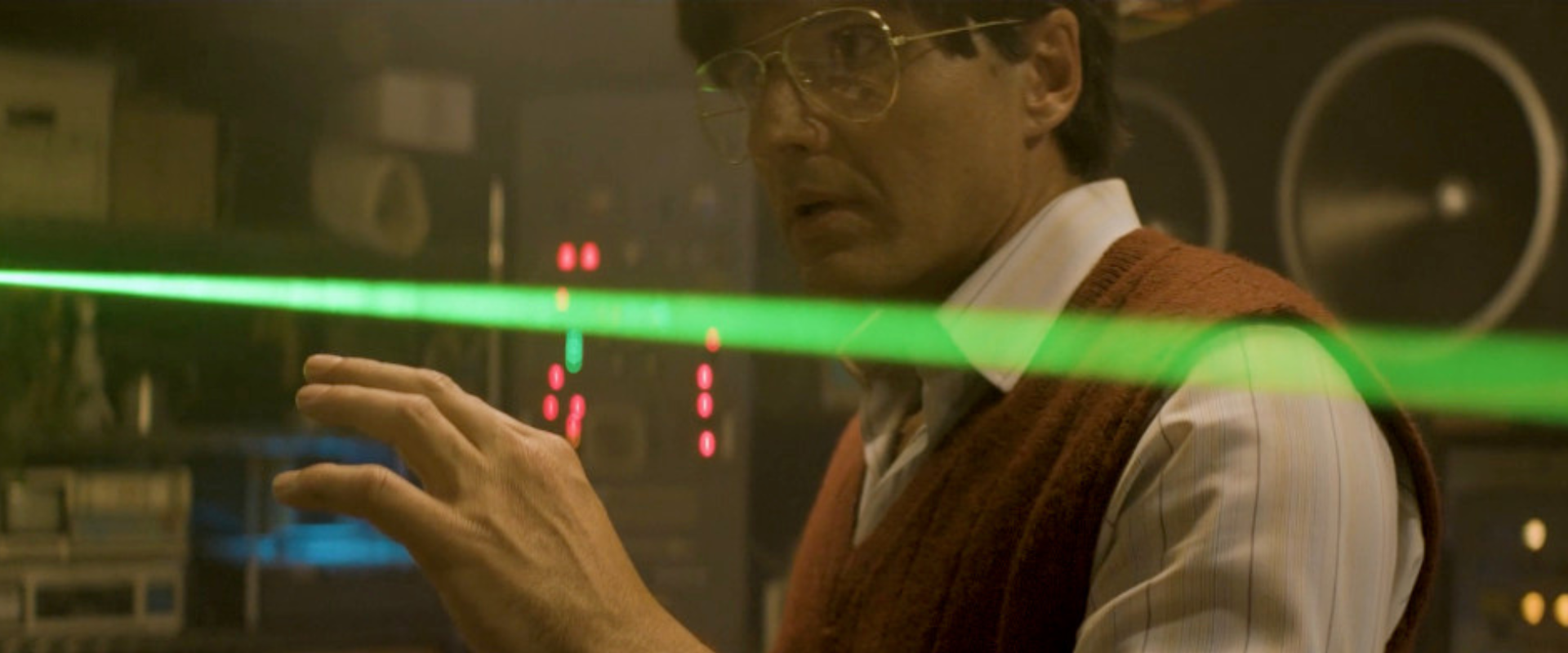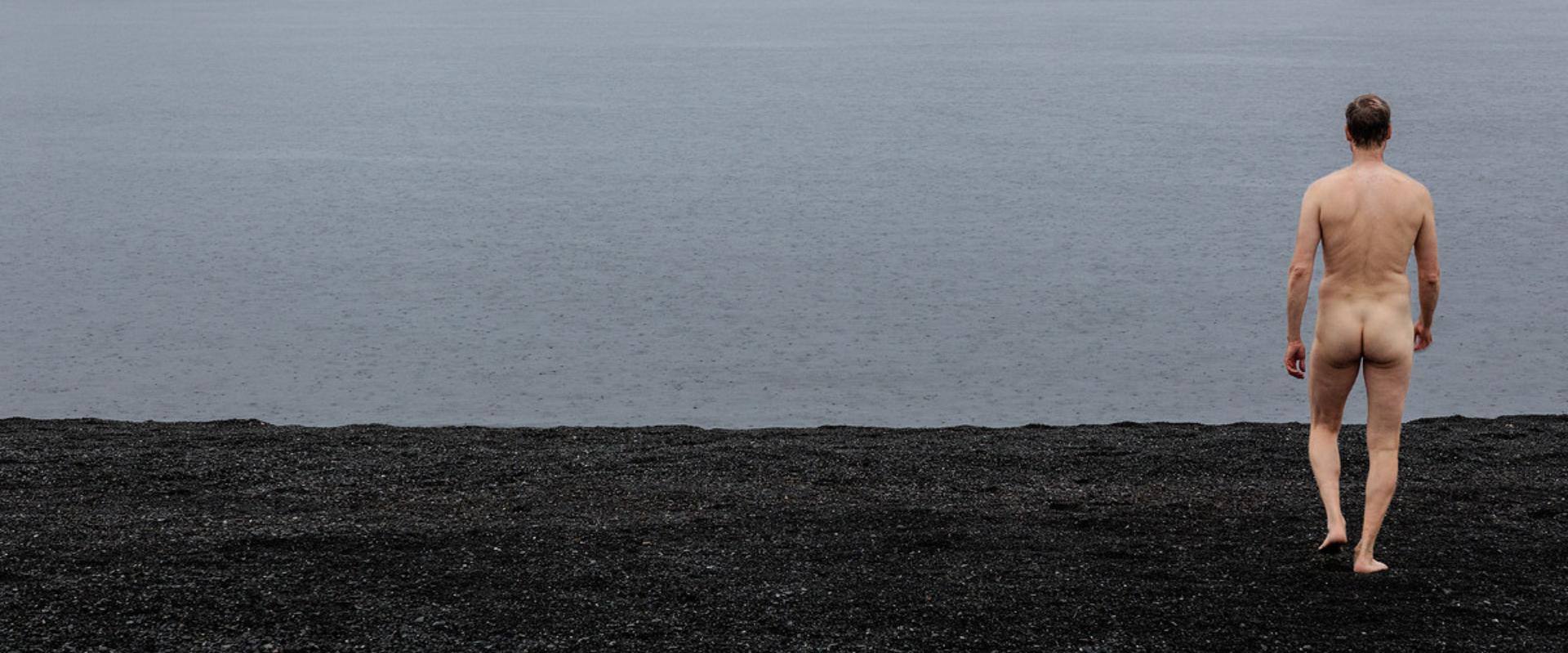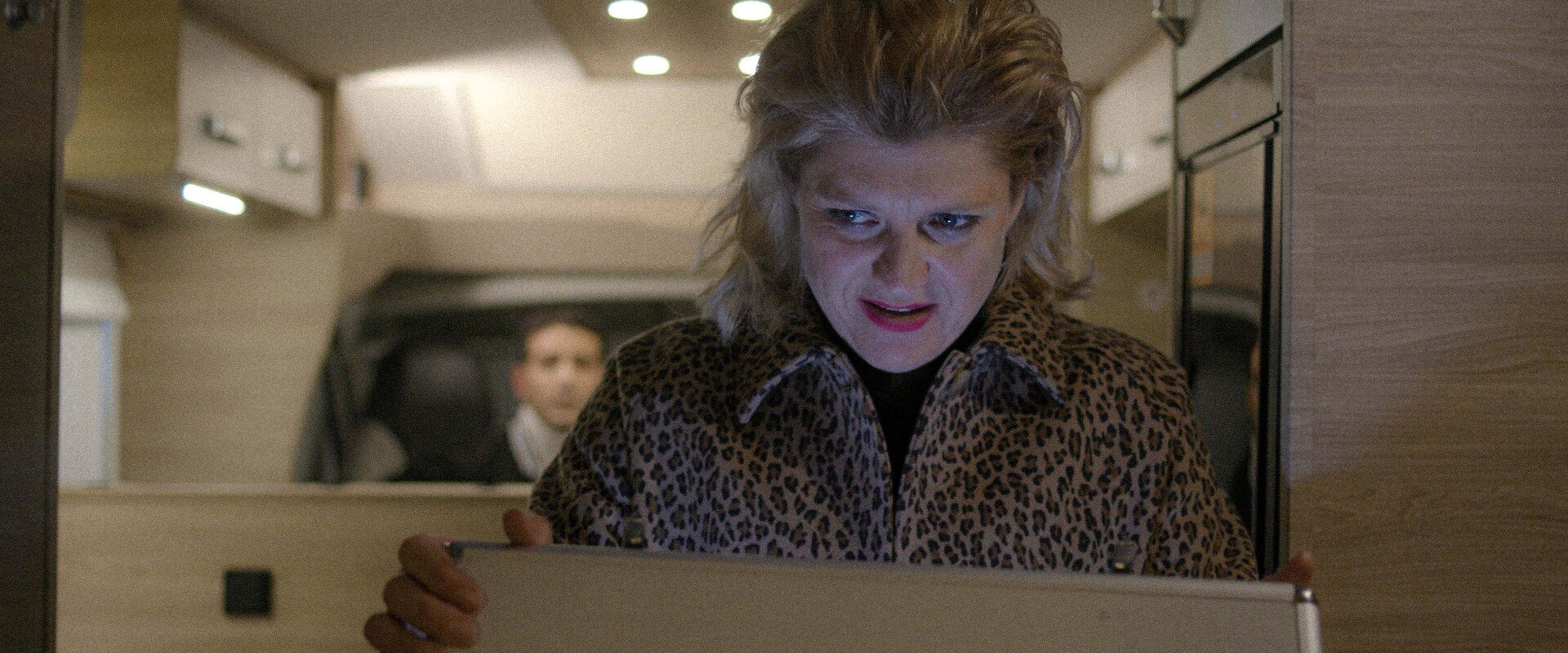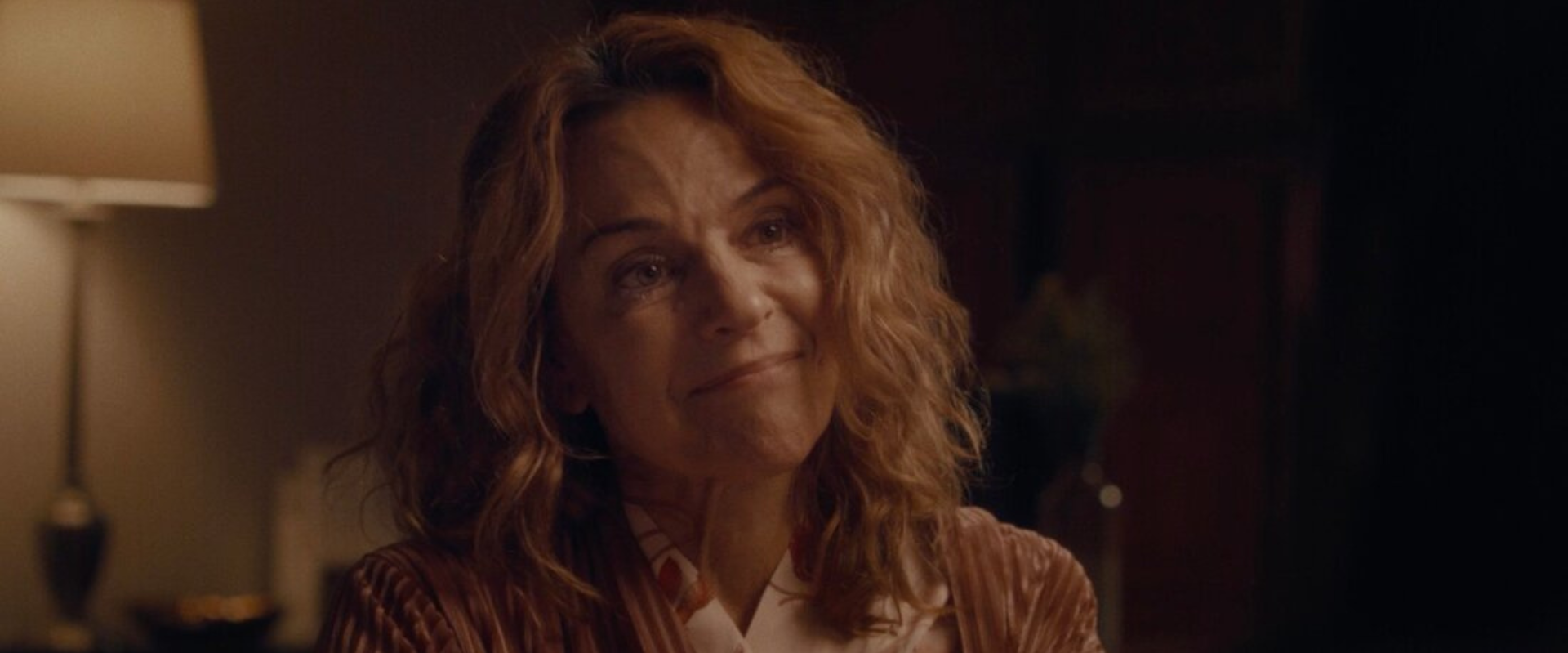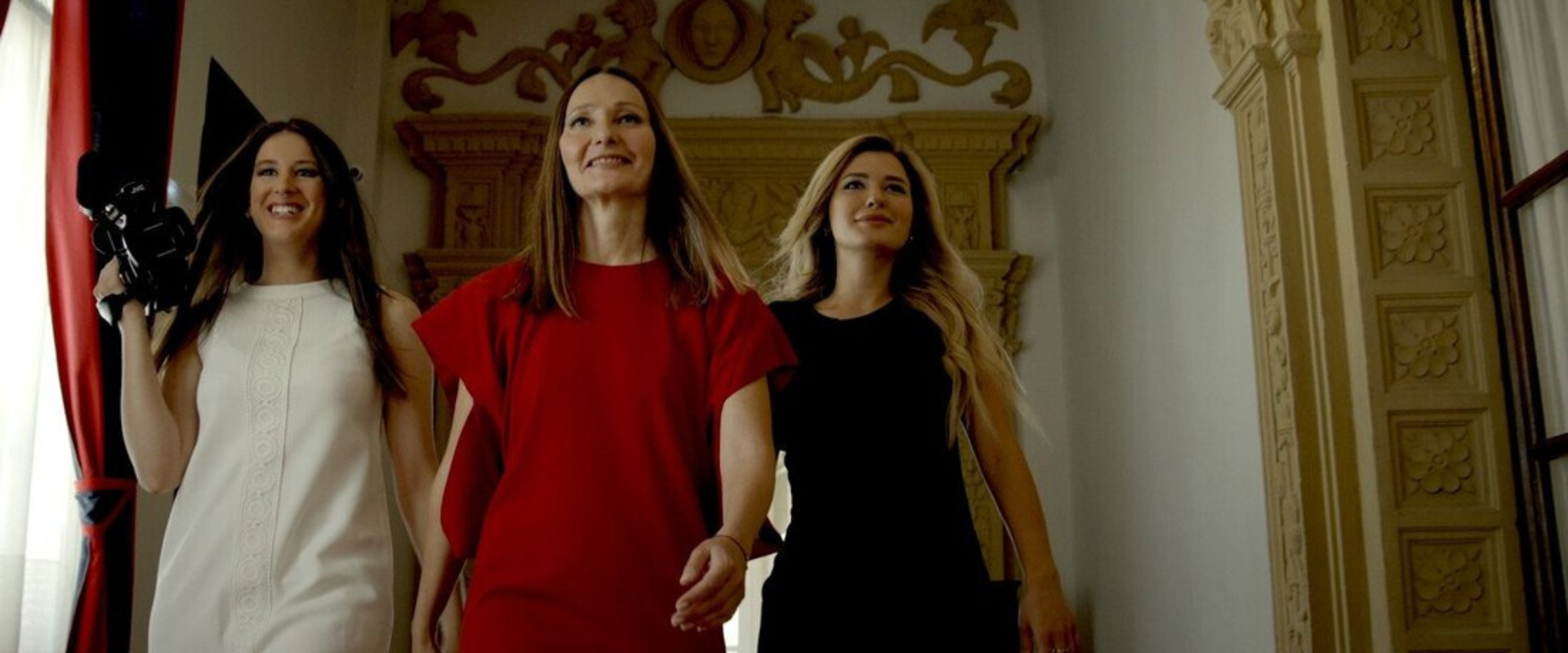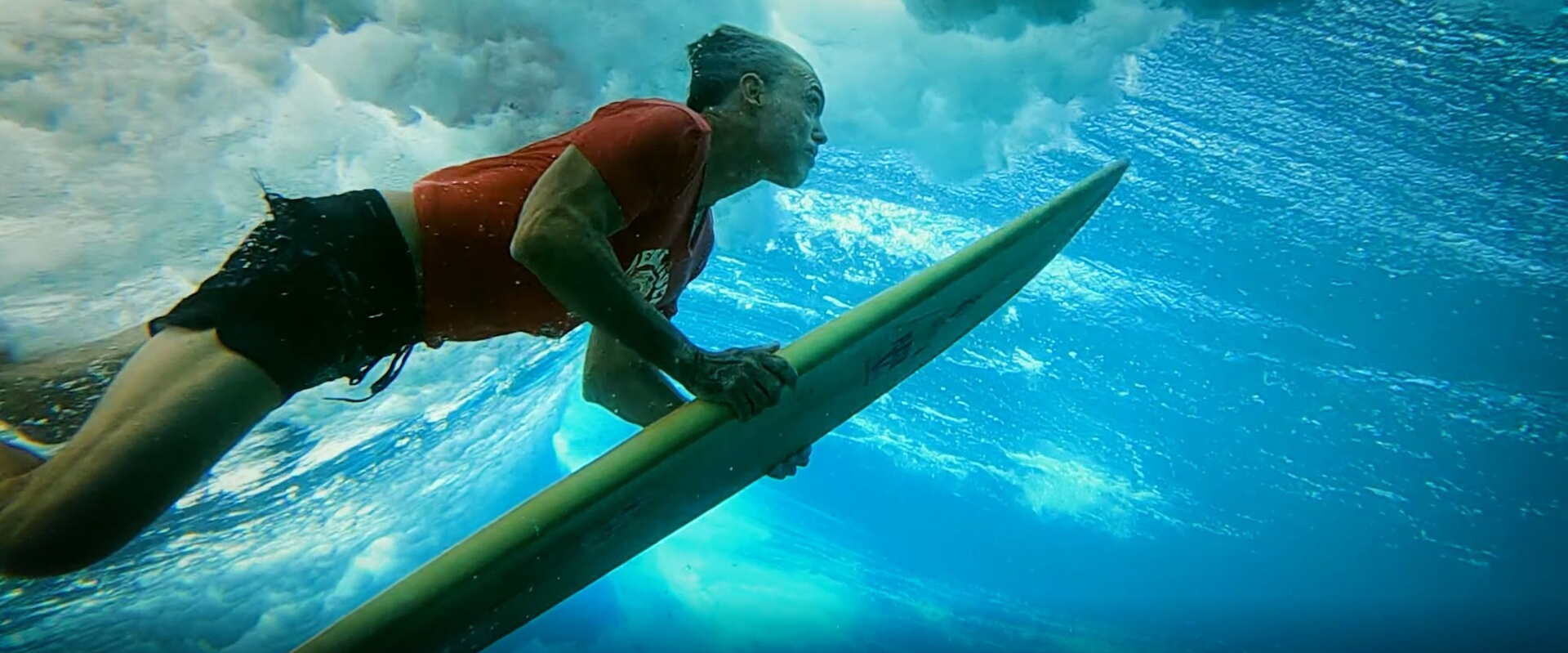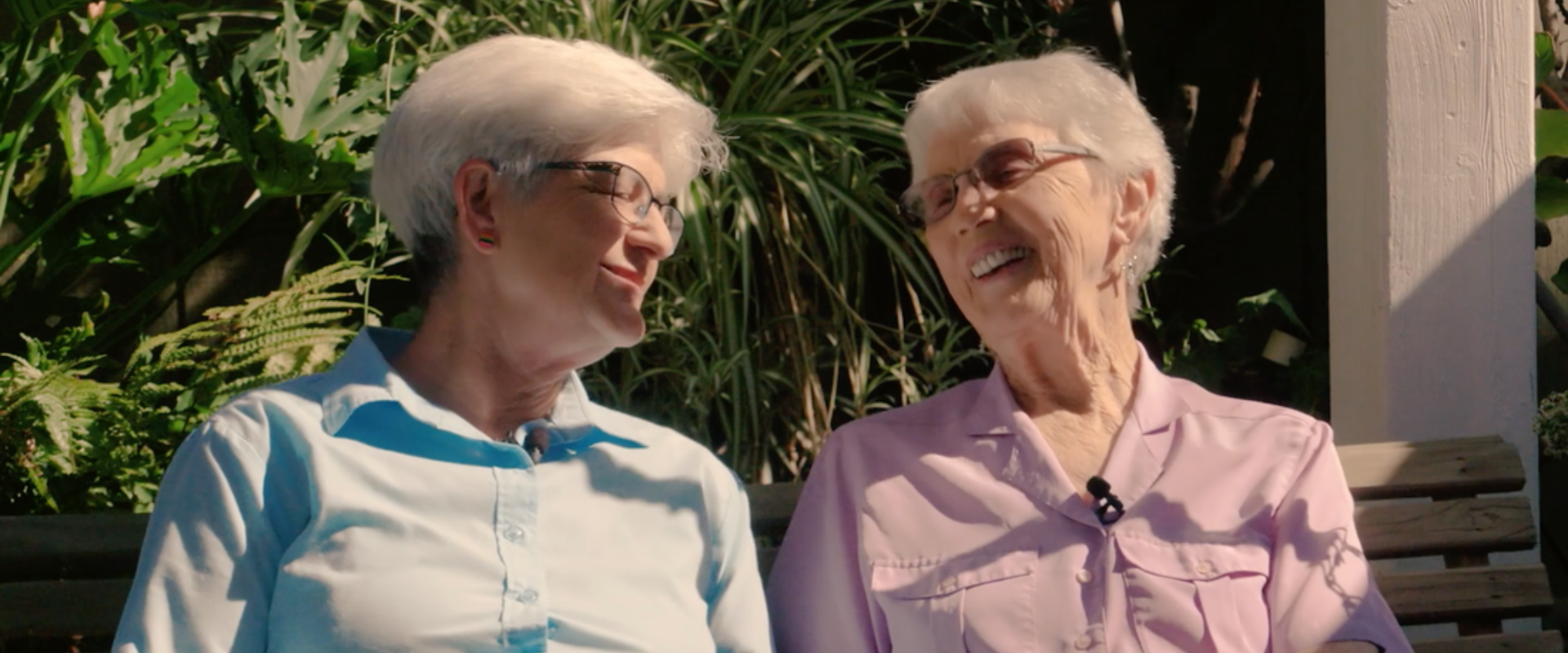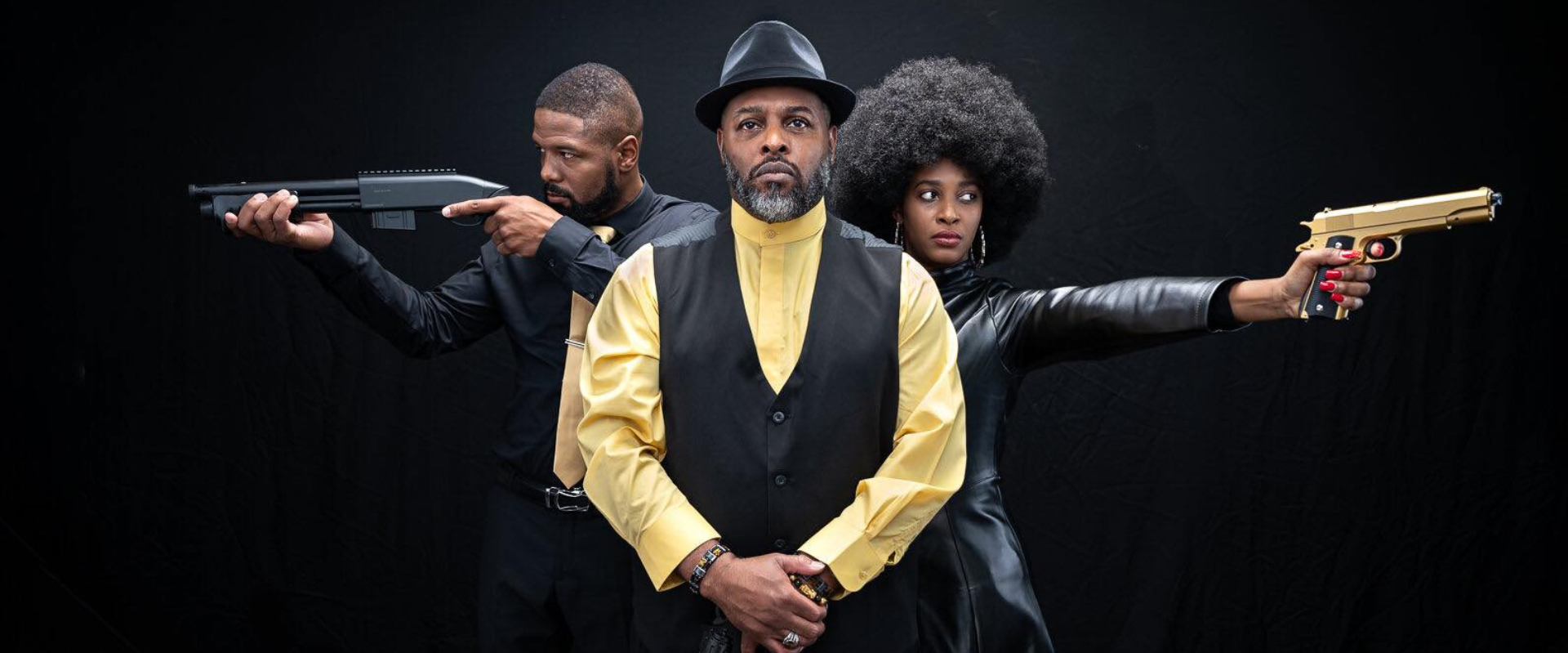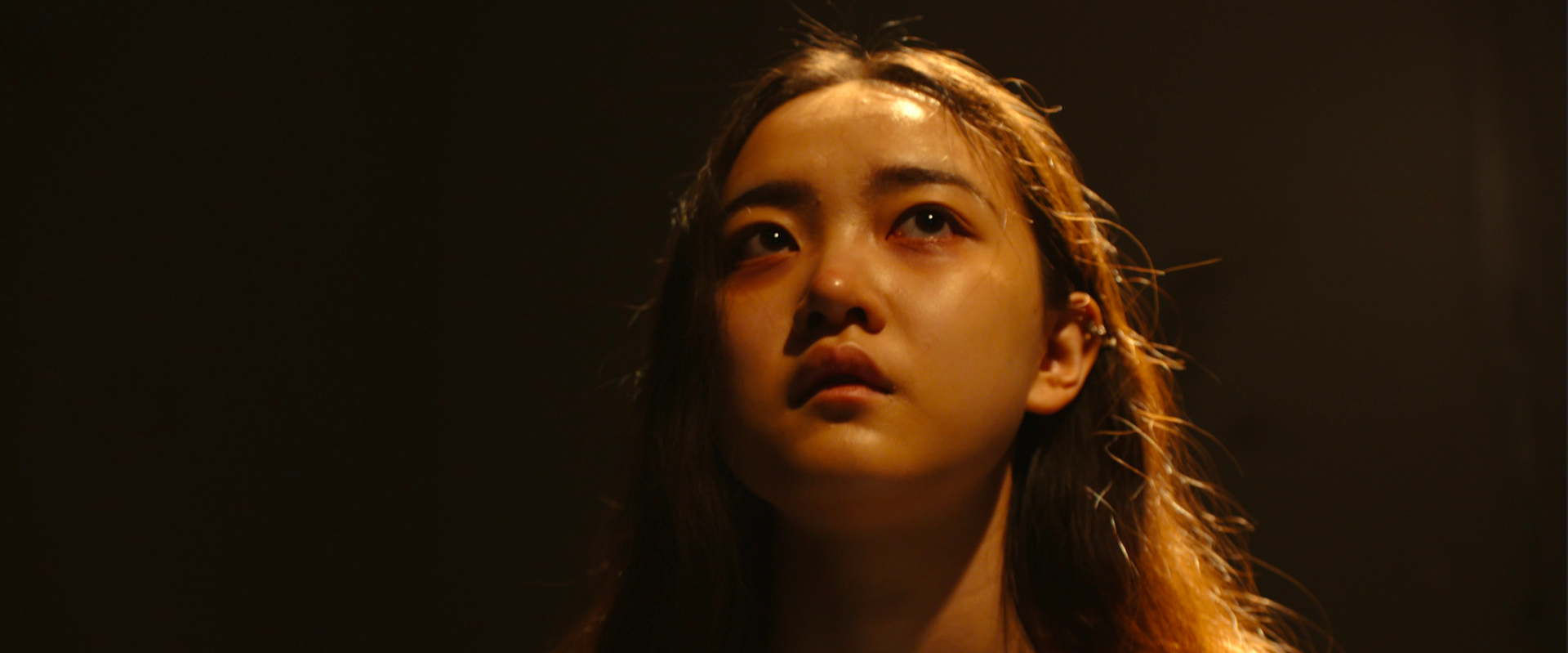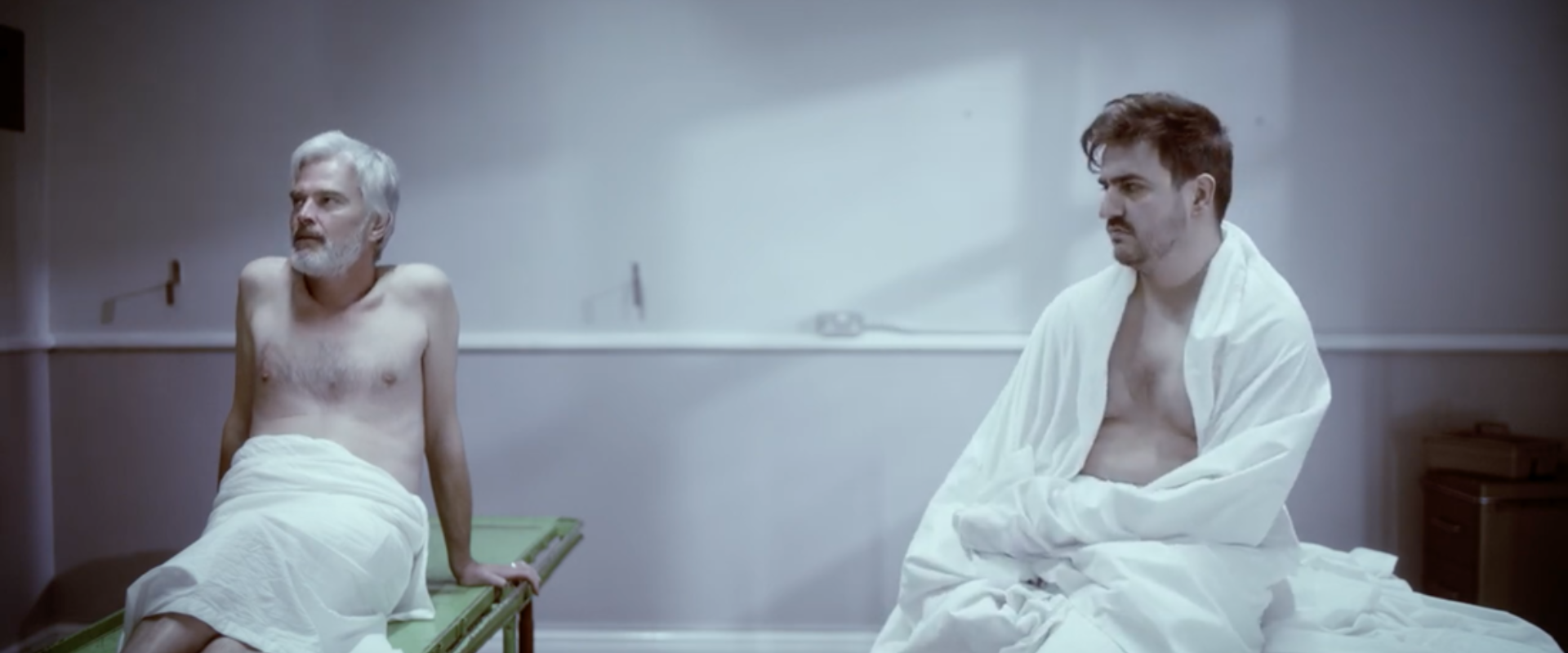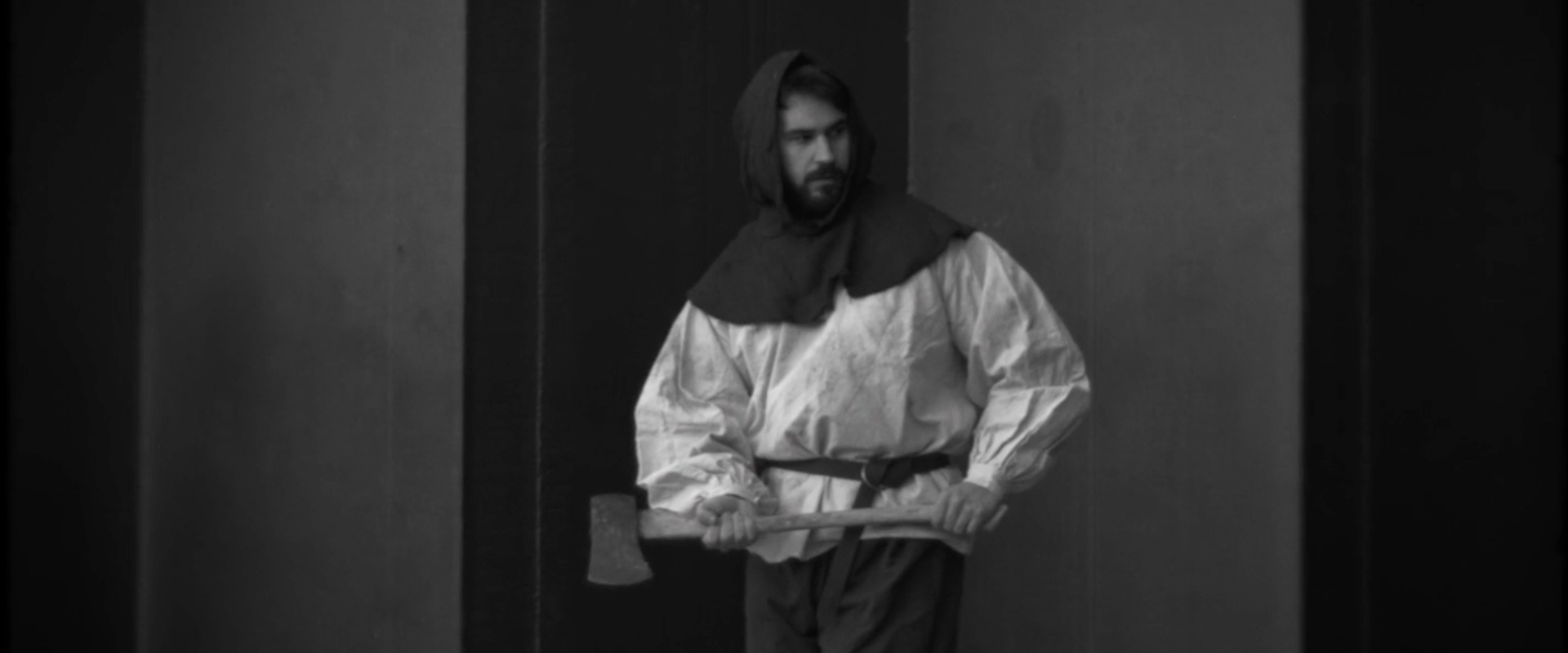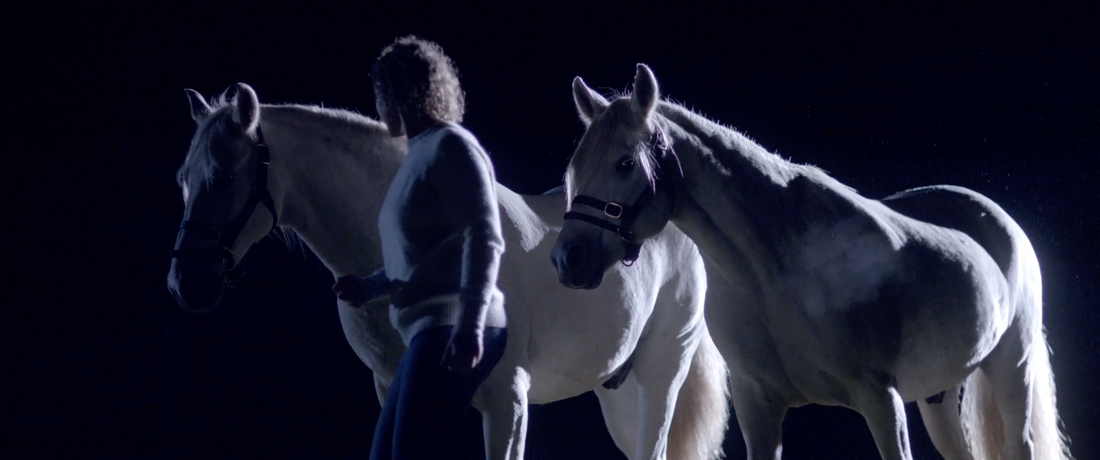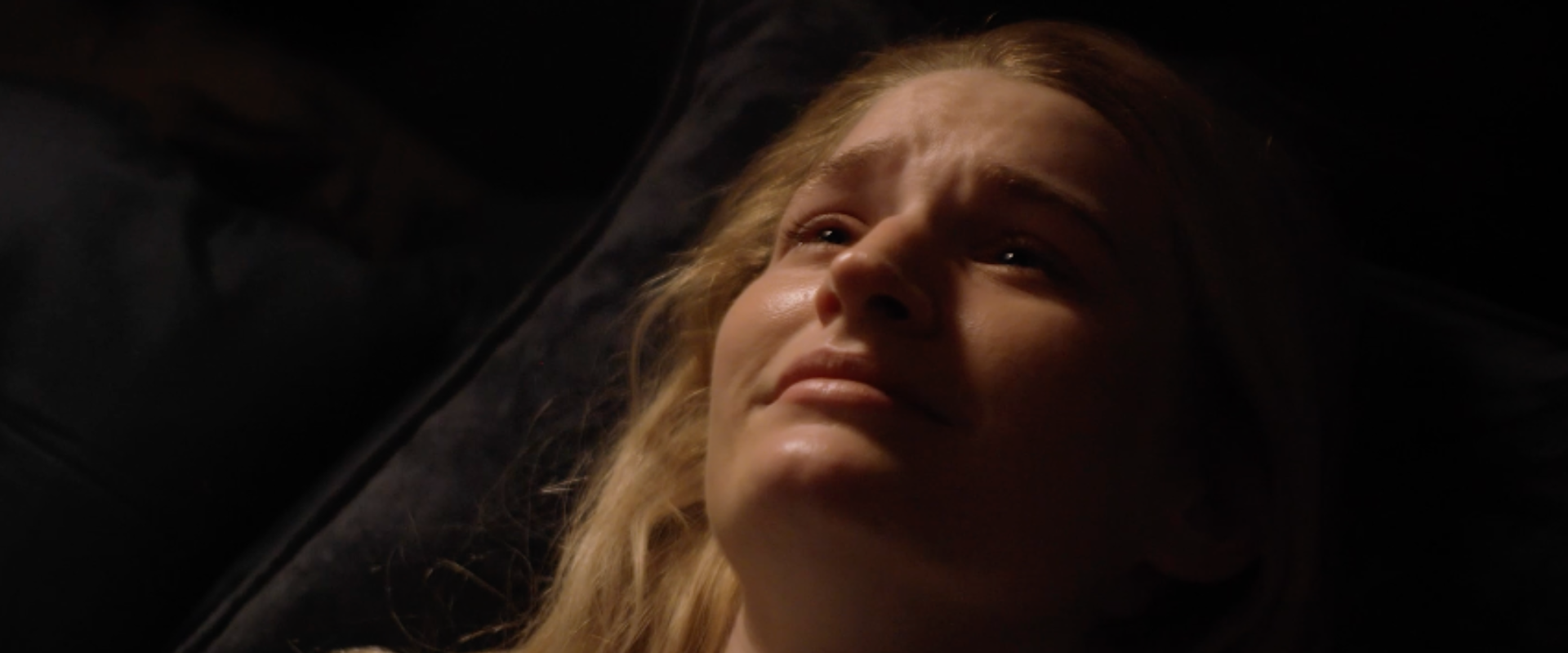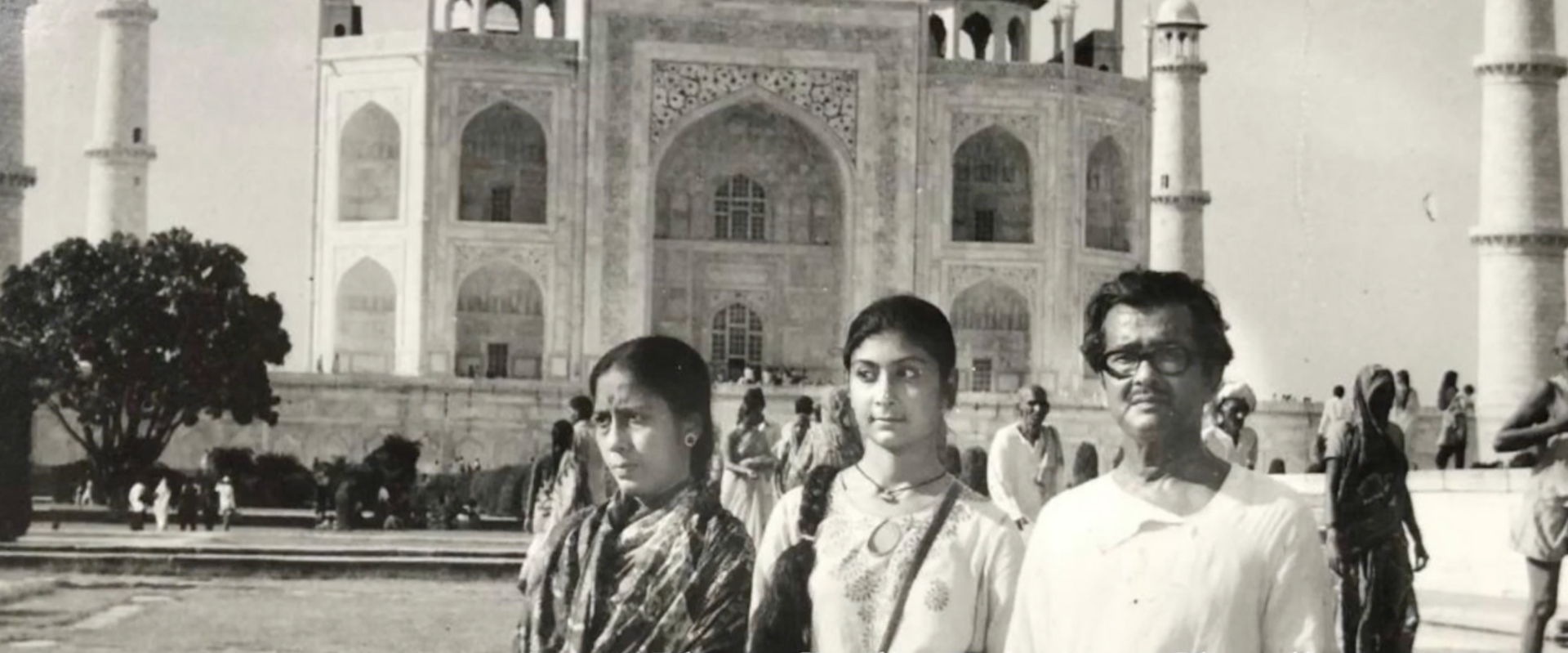|
A
A MONTH. A DAY. A YEAR (USA)
Hunter Brockmann In A Month. A Day. A Year., Hunter Brockmann takes us on a cerebral odyssey, navigating the treacherous waters of the human psyche with a subtlety reminiscent of Bergman's Persona. We dive deep into the quagmire of dreams, waking nightmares, and the grim reality that underpins them, all seen through the lens of the emotionally complex protagonist, Serge. Brockmann, with a filmmaking style that's already hinting at a signature—meticulous, understated, and emotionally charged—invites the viewer to step into the shoes of someone living with autism and depression. Just as Alice found herself navigating a labyrinthine world of eccentric characters and ever-shifting realities in Lewis Carroll’s tales, Serge's journey plays out in a similar dance between perception and reality. The influence of Brockmann's earlier works, such as Momo and From Sleep to Sunrise, are evident, further attesting to his unique knack for combining the phantasmagoric with the deeply personal. The casting is a particular triumph. Hunter Charles Brockmann, who steps into the challenging role of Serge, portrays a layered and nuanced character that effortlessly keeps the audience engaged and empathetic. It's a brave performance, eliciting both admiration for the character's resilience and heartbreak for his struggles. Supporting cast members, like Fritz Frauendorf and Danielle Watson, bring a depth and dynamism that strengthens the narrative and intensifies the emotional investment of the viewer. Much like Dario Bocchini’s Ride With The Guilt, Brockmann's film is an experiment in controlled disintegration, a slow, methodical unraveling of a mind straddling the divide between reality and fantasy. However, where Bocchini's film is charged with emotional intensity and wild symbolism, A Month. A Day. A Year. embraces a more reserved, contemplative mood—akin to a Kafkaesque meditation on inner turmoil. Moreover, while watching the film, one cannot help but be reminded of the classics of cinematic introspection—titles like 8½ by Federico Fellini or the hauntingly beautiful Mirror by Andrei Tarkovsky come to mind. The rich tapestry of emotions, the duality of identity, and the interplay of the internal and external worlds are themes that have fascinated filmmakers for generations. Brockmann, with this offering, positions himself comfortably among the ranks of those auteurs. On a technical note, the choice of digital as a shooting format gives the film a clean, crisp aesthetic, which pairs intriguingly with the muddled, foggy landscape of Serge's mind. The 16:9 aspect ratio, while conventional, works in the film's favor, allowing for tight, close-up shots that make the viewer feel intimately connected to Serge's mental and emotional state. In conclusion, A Month. A Day. A Year. is an intricate tapestry of raw emotion, framed by exceptional cinematography and grounded by stellar performances. It's a film that demands multiple viewings, with each one revealing another layer of meaning, another nuance. Brockmann, with this cinematic gem, has solidified his position as a filmmaker to watch, and I, for one, eagerly await his next masterpiece. An evocative journey through the human psyche, this film is undoubtedly a Grade A. A SIDE OF RICE (CANADA)
Tamir Moscovici Moscovici, whose background in fine arts and film production enriches the documentary's aesthetics, successfully paints a picture of Rice's life that is both captivating and deeply personal. His cinematic eye and attention to detail are evident in the finely-tuned mise-en-scène, allowing viewers to immerse themselves in Rice's world. Just as Ken Burns did in "The Civil War", Moscovici skilfully blends archival footage, photographs, and interviews, further enhancing the historical verisimilitude of the film. The documentary's longitudinal structure allows for a comprehensive exploration of Rice's life, from his childhood in Winnipeg and the inception of his acting career, to the personal losses and victories he experienced. Moscovici expertly utilises the narrative arcs and dramatic tension inherent in Rice's story, much like the narrative strategies of the esteemed documentarian Michael Apted in his "Up" series. A significant part of the film revolves around Rice preparing his autobiographical stage show, providing a captivating metatheatrical layer to the film. Moscovici’s choice of direct cinema approach here, observing Rice's process without interference, allows an authentic insight into his creative journey and challenges akin to D.A. Pennebaker’s style in “Don’t Look Back”. The film navigates themes of grief, joy, and the pursuit of creative happiness with grace and sensitivity. Through observational and participatory modes of documentary filmmaking, Moscovici manages to construct a vivid portrait of a man whose life is as compelling as the roles he's played on stage and screen. In conclusion, "A Side of Rice" stands as a testament to the power of documentary cinema to narrate personal journeys with the same dramatic force as fictional narratives. It’s an effective homage to a prolific actor and a beautifully crafted piece of cine-verité, a triumph in the genre. This film, much like Rice's illustrious career, leaves an indelible mark on its audience, affirming Moscovici's place as a true raconteur in the landscape of documentary filmmaking. AND THERE'S SOMEONE (Italy)
Stefano Giannotti "E C'È' QUALCUNO" is a profound exploration of the theme of death, encapsulating the delicate balance of sorrow, acceptance, and the ethereal journey of souls. Directed by Stefano Giannotti, the video narrates a story far beyond conventional music videos, pushing the boundaries with its emotional depth and symbolic imagery. In a span of just under five minutes, "E C'È' QUALCUNO" transports viewers into a realm where the souls of the departed find solace amidst the clouds. The choice of landscape, although set against the backdrop of Albania, serves not to celebrate the region's beauty, but rather as a canvas upon which Giannotti paints his poignant narrative. Central to the video's message is the introduction of a Health-Care Assistant, played by Mariola Krajczewska, Stefano Giannotti’s wife, who discusses the impending death of the terminally ill. These words later metamorphose into the haunting lyrics of the song, illustrating the delicate line between life, death, and the realm beyond. The swimmers, gracefully navigating the skies, serve as a metaphor for those departed souls — seemingly content and free from the sorrows of the living world. Giannotti's ingenuity in conveying complex emotions through visuals is evident throughout the video. Life cycles, memories, and the human experience in the face of mortality are all interwoven into a narrative that communicates volumes without the need for spoken dialogue. The soundtrack, composed by Giannotti himself, amplifies the video's emotional resonance. It creates an ambiance that aligns seamlessly with the visual narrative, guiding the viewer through an intricate maze of emotions, from sorrow to acceptance and finally to serene understanding. Giannotti's venture into the realm of visual arts showcases yet another facet of his expansive artistic prowess. Masterfully blending music with visuals, he turns "E C'È' QUALCUNO" into a touching audiovisual representation of the human experience in the face of death. Having been celebrated at renowned international festivals like Festival Archipel (Geneva), Cucalorus Film Festival (Willmington – NC), Stichting Worm (Rotterdam), and the Lucca Film Festival, "E C'È' QUALCUNO" has rightfully claimed its distinguished position on the world stage. In summation, "E C'È' QUALCUNO" stands as a testament to the potential of music videos as a medium for profound artistic expression. Stefano Giannotti's masterful blend of music and visuals offers an experience that resonates deeply, leaving viewers contemplative and profoundly moved. ANNIE PANNIE (UK)
Deanna Dewey In "Annie Pannie," director Deanna Dewey masterfully weaves a gripping story that keeps audiences on the edge of their seats. This award-winning director and children's author has an innate talent for crafting narratives that resonate with viewers, and "Annie Pannie" is no exception. The film centers around the enigmatic characters of Kikki and Ryan, portrayed brilliantly by the talented Georgia Henshaw and Nick Bartlett, respectively. Their captivating performances draw viewers into a world of intrigue and tension, as secrets and emotions collide in a small motel setting. Dewey's vision for the film was brought to life with the collaboration of Spanish cinematographer Pol Camarero Just, who also served as a producer. The decision to shoot the film in Tenerife, Spain, added a unique atmosphere to the story, and Pol's expertise in lighting and cinematography enriched each shot with emotion and mood. The choice to shoot handheld lends the film a sense of immediacy and intensity, perfectly complementing the script's themes. In the confined space of the motel, the claustrophobic atmosphere heightens the tension, adding depth to the characters' emotional journey. One of the film's standout elements is the titular doll, Annie Pannie, which serves as a symbol of Kikki's past and emotional anchor. Dewey's decision to use a 1950s doll dressed in modern clothes adds an intriguing layer of nostalgia and symbolism. The subtle movements of the doll, carefully orchestrated by Dewey, leave audiences questioning its significance, leaving room for interpretation and discussion. The editing, skillfully handled by Terry Wookey, perfectly captures the emotional nuances of the script. Dewey's long-term collaboration with Wookey ensures a seamless flow of the narrative, drawing out the emotional impact of each scene. The film's original score, composed by Michael Walters, deserves special mention for its ability to heighten the film's feelings and tensions without overpowering the storytelling. The sound design, under the expert guidance of Ruanth Thyssen, enhances the film's mood, particularly as it builds towards Kikki's final scene in the car. As the story unfolds and Kikki's journey takes a thrilling turn towards revenge, viewers are left pondering the fine line between reality and imagination. Dewey's deliberate choice to leave the doll's movements open to interpretation adds an element of intrigue, prompting the audience to engage in the film's mysteries. "Annie Pannie" is a testament to Deanna Dewey's directorial prowess, as she skillfully crafts a compelling narrative that captivates and resonates with audiences. Through meticulous attention to detail and collaboration with her talented team, Dewey creates a world that invites viewers to delve into its complexities and find their own meaning within its story. With "Annie Pannie," Deanna Dewey proves her prowess as a director who fearlessly explores the depths of storytelling, leaving us eager to witness the thrilling stories she has yet to unveil. As she continues to champion original scripts and mesmerize audiences with her artistry, we eagerly await the next chapter in Deanna Dewey's cinematic journey. A WICKED GAME (USA)
Derrick Benton In a world where screenplays often regurgitate the archaic and the mundane, Derrick Benton's *A Wicked Game* enters like a gust of fresh, melancholic wind. Benton crafts a beguiling world where Ozymandias, our young protagonist, seeks to wrestle with the ethereal strands of time, and in doing so, challenges the very notions of existence, belonging, and selfhood. Benton, who hails from Brooklyn, brings to his narrative a rich tapestry interwoven with his academic pursuits. His earlier accolade, "Acid Rain," gave us a glimpse of his prowess in delving deep into the psyche of his characters, unearthing themes of existential anxiety, identity, and societal discord. But with *A Wicked Game*, he pushes boundaries even further, in a narrative structure reminiscent of the avant-garde tonality in works like David Lynch's *Eraserhead* or Terrence Malick's *Tree of Life*. The film oscillates between dream and reality, echoing the introspective nature of the protagonists in Bergman's classics, as young Ozymandias wades through the murky waters of his identity, echoing sentiments we saw in films like *Pan's Labyrinth*. This tale is no simple coming-of-age story; it's a nuanced exploration of the transition from innocence to knowledge, from child to adult, and from the periphery to the epicenter of one's own universe. The commentary by a script-reader from the Lonely Wolf Film Festival, emphasizing its character-driven drama and focus on outsiders, only serves to highlight the mastery with which Benton handles such intricate narratives. Stylistically, Benton draws from a palette rich in symbolism and abstraction. He paints scenes that teeter on the edge of fantasy and drama, often bleeding into the realm of horror, mystery, and suspense. This is no surprise given his background in film theory and philosophy. One can't help but be reminded of Fellini's surreal explorations or Kubrick's meticulous and haunting atmospheres when journeying through the intricate corridors of Ozymandias's mind. Of note, the screenplay's brilliant execution in tying together the cyclical nature of life— from babyhood to boyhood, and perhaps beyond— deserves accolades. By doing so, Benton not only comments on the inexorable march of time but also on the undulating dynamics of memory, recollection, and introspection, themes explored by auteurs like Andrei Tarkovsky in *Mirror*. In a way, Derrick Benton's *A Wicked Game* is a poignant reminder of the enigma of human existence. It's a heart-wrenching, cerebral, and, at times, unnerving exploration of a young boy's journey to find his place in the vast canvas of the universe. It's an invitation to reflect on our own journey, on the ticking clock that we all hear, and on the timeless dance of life and identity. As Ozymandias grapples with his place in the cosmos, we too are compelled to question, to feel, and to introspect. As the film concludes, it's evident that Derrick Benton is no novice to the world of storytelling. He's a master sculptor, chiseling away at raw emotion, societal constraints, and existential musings to reveal a masterpiece that stands tall in the pantheon of modern cinema. *A Wicked Game* isn't just a film; it's an experience, a reflection, a haunting melody that lingers long after the credits roll. A magnum opus by a true auteur. Grade: A*. C
CALF ROPE (USA)
Bradley Hawkins CALF ROPE is a heartwarming and poignant family drama that transcends time and generations, celebrating the enduring power of legacy and the cherished memories passed down from one generation to the next. Directed by Bradley Hawkins, this captivating short film takes inspiration from his own childhood memories of the profound bond he shared with his Grandad Mac, an influential figure who unknowingly left behind a lasting impact on his life. Set against the backdrop of the 1960s, CALF ROPE transports viewers to a bygone era, where the tight-knit relationship between a young boy named Brandon (Lukas Barnett) and his grandfather, affectionately known as "Mac" (Gorman Ruggiero), takes center stage. Mac, a former junior rodeo champion from Oklahoma and a seasoned cattle auctioneer, becomes a source of wonder, magic, and endless possibilities for young Brandon. The film delves into the importance of legacy, emphasizing the profound impact that grandparents can have on shaping the lives of their grandchildren and the generations that follow. Through heartfelt performances by the cast, CALF ROPE captures the essence of intergenerational connections and the values passed down through stories, experiences, and traditions. Hawkins, a seasoned actor turned award-winning indie film director, pours his heart and soul into CALF ROPE, making it a deeply personal and meaningful project. The film's narrative resonates with authenticity and emotional depth, as Hawkins draws from his own experiences to create a touching tale of love, resilience, and familial bonds. The success of CALF ROPE on the film festival circuit is a testament to its powerful storytelling and outstanding performances. The film has received over 150 awards from festivals worldwide, including the People's Choice Award at the Red Rose Film Festival and the Best Narrative Short at the Allentown Film Festival. Its international acclaim has brought it to audiences in the United States, the United Kingdom, the Netherlands, Australia, New Zealand, and Brazil. As a family-friendly film, CALF ROPE embraces the spirit of live-action Pixar-esque material, ensuring that audiences of all ages can connect with its themes of love, legacy, and the enduring bond between grandparents and grandchildren. With its universal message, the film leaves a lasting impression, inspiring viewers to cherish their own family connections and to create meaningful legacies for future generations. For Bradley Hawkins, CALF ROPE is more than just a creative endeavor—it is a deeply personal and heartfelt tribute to the grandfather who left an indelible mark on his life. Through the wonder and magic of cinema, CALF ROPE preserves the legacy of love, joy, and resilience that grandparents bestow upon their grandchildren, echoing the sentiments of "Mac" as he imparts valuable life lessons to young Brandon. As Hawkins continues to make his mark in the indie film industry with his production company, Dadley Productions, and his upcoming projects, the profound impact of CALF ROPE will resonate with audiences worldwide, leaving a legacy of its own within the realm of heartfelt storytelling. D
DARK WEB (USA)
Tyler Appian Prepare to be taken on a chilling and suspenseful journey into the depths of the internet's darkest secrets with "Dark Web," a compelling and thought-provoking short film directed by Amanda Rodriguez. This gripping thriller explores the sinister side of the virtual world, exposing the hidden horrors that lurk beneath the surface. Set in an unsettling dystopian future, "Dark Web" thrusts viewers into a world where the boundaries between reality and virtual reality blur. The film follows the journey of Sarah (played convincingly by Emma Johnson), a young journalist determined to uncover the truth behind a series of mysterious disappearances linked to an enigmatic online platform known only as the "Dark Web." From the outset, the film's atmosphere is suffused with tension, as eerie electronic beats and haunting visuals set the tone for the dark and foreboding narrative. Amanda Rodriguez skillfully captures the essence of a technological nightmare, skillfully portraying the psychological toll of delving deeper into the treacherous corners of the internet. As Sarah delves deeper into the elusive world of the "Dark Web," the film gradually builds suspense, keeping audiences on the edge of their seats with each revelation. Rodriguez deftly employs suspenseful camera angles and expertly crafted visual effects to heighten the sense of danger lurking around every corner of this digital underworld. The outstanding cinematography and production design transport viewers into a chilling cyber-realm, where anonymity breeds malevolence and the consequences of curiosity are dire. The stark contrast between the eerie neon-lit cyber world and the bleak reality of Sarah's investigations creates a visual dichotomy that further immerses the audience into this dystopian nightmare. Emma Johnson delivers a standout performance as Sarah, skillfully portraying her character's determination, vulnerability, and growing unease as she ventures deeper into the labyrinthine Dark Web. The supporting cast also shines, with notable performances from John Anderson as the elusive hacker "Cipher" and Elizabeth Garcia as Sarah's cautious but supportive editor. "Dark Web" not only serves as a captivating thriller but also serves as a cautionary tale about the dangers of the unchecked digital world. As the plot unravels and the harrowing truth behind the disappearances comes to light, viewers are left contemplating the consequences of unchecked technological power and the ethical dilemmas that arise in the pursuit of truth. Overall, "Dark Web" is an engrossing and timely exploration of the perils of the digital age, skillfully directed by Amanda Rodriguez and brought to life by a talented cast and crew. With its tense atmosphere, compelling storytelling, and thought-provoking themes, this short film will undoubtedly leave audiences contemplating the shadows that lurk behind the screens and the potential consequences of exploring the unknown corners of the internet. DEATH AND (USA)
Mariah Morgenstern "Death And," the latest directorial venture from Mariah Morgenstern, takes the viewer on an unhinged, comedic journey that beautifully balances the line between outrageous hilarity and riveting tension. An LA-based director with a knack for offbeat humor, Morgenstern has been making waves in the cinematic world with her distinctive style and unique voice. With this new feature, she takes a quantum leap forward, marrying elements of classic Tarantino-esque humor with the riotous energy of a James Gunn film to deliver a truly memorable cinematic experience. The film tells the wild tale of YesANDra Bullock, an improv troupe known for their razor-sharp wit and irreverent humor, as they find themselves trapped in a deadly game of improv. This unconventional premise lends itself to a plethora of outrageous scenarios and darkly comedic moments, all brought to life by Morgenstern's deft direction. Morgenstern, a Second City Hollywood-trained improvisor and UCF graduate, has a background in comedy that is palpable throughout the film. Her comedic timing is razor sharp, the dialogues crackle with wit, and even in the most intense sequences, there's always room for a smart one-liner or a hilariously unexpected reaction. It's clear that she understands the rhythm and nuances of comedy, and she uses that understanding to great effect in this film. What truly sets "Death And" apart, however, is Morgenstern's bold, transgressive narrative style. She is not afraid to push the boundaries of conventional storytelling, crafting a film that is unapologetically wild, unpredictable, and downright bloody fun. The resulting cinematic chaos, far from being just a mindless bloodbath, is a carefully orchestrated dance of chaos and comedy, full of surprising turns and memorable moments. As for the performances, the cast of YesANDra Bullock, all trained improvisors themselves, deliver consistently entertaining performances, showcasing impressive comedic range and surprising emotional depth. The chemistry between the cast members is palpable, lending an air of authenticity to the group dynamic and elevating the humor even further. Morgenstern's directorial vision shines in every frame of "Death And." Her passion for creating compelling cinematic experiences that draw audiences away from their screens and into theaters is clear. Whether it's the visually striking set pieces, the sharp, witty dialogue, or the way she deftly balances tension and humor, Morgenstern's touch is evident throughout. In conclusion, "Death And" is a wildly entertaining, genre-bending riot of a film that marks a significant step forward for Morgenstern as a director. Her distinctive style, impressive comedic timing, and willingness to embrace narrative chaos combine to create a cinematic experience that is as entertaining as it is unique. It is a testament to her talent and vision that "Death And" manages to be a bloody, laugh-out-loud funny, and ultimately heartwarming film. It will undoubtedly leave audiences eagerly awaiting Morgenstern's next move in the world of cinema. DEATH AND FAXES (UK)
Erbil Shaban "Death and Faxes" stands out as a triumph in director Erbil Shaban's already notable portfolio. Known for his work in music videos and commercial content, Shaban now shows us a whole new dimension to his talents in this touching, yet humor-tinged, contemplation on life and death. This short film masterfully blends elements of drama and comedy, creating a narrative experience that lingers long after its brief 12-minute duration. The film takes us into the surreal setting of a mysterious waiting room, which serves as a transitional point, both literally and metaphorically. Here, Shaban delves into deep, existential themes with a wit and subtlety that keeps the audience engaged and thoughtful. The plot weaves an intricate dialogue on the fragility of life, the finality of death, and the strange irony of afterlife bureaucracy. The performances extracted from the lead actors are remarkable. Dorian Simpson as Jim Schafer, a man confronted with his own mortality and the inconsequence of his existence, offers a character study in stubbornness and vulnerability. Lester Cowling, portraying the jaded Demise Consultant Stanley Woland, provides a pragmatic and somewhat cynical counterbalance to Schafer's defiance. Together, their dynamic creates a fascinating portrayal of human nature in the face of death. What distinguishes "Death and Faxes" as a remarkable piece of work is Shaban's audacity to venture into the often avoided narrative of death, delivering a fresh perspective in an era saturated with typical narratives. His unique approach offers a refreshing contrast, compelling us to confront our shared mortality in a profoundly human way. Shaban is not merely emerging as a talented filmmaker; he is becoming a significant and thoughtful voice in cinema. This film, created on a modest budget of 5,000 GBP, transcends its financial constraints and leaves a lasting impact. Shaban's vision as a filmmaker is evolving and "Death and Faxes" serves as a testament to his growing prowess. It promises even greater, more engaging content in the future. In closing, "Death and Faxes" is an introspective and deeply engaging film that manages to infuse its existential dialogue on life and death with drama and comedy. It is an impressive demonstration of Erbil Shaban’s directorial aptitude and a confirmation of his rising status in the filmmaking world. The film leaves me not only deeply moved but also excited to see what this promising director will bring us next. F
FELICITY OF A RICE GRAIN (Netherlands)
Margreet Kramer In the rich tapestry of global cinema, it is the finely threaded, minutely detailed pieces that often stand out with luminescence. Such is the magic of Margreet Kramer's Felicity Of A Rice Grain, an ode to the universality of human emotions and the nuances of the everyday. In its 73-second runtime, this film accomplishes what epics seldom dare to touch: the profundity of the mundane. Kramer's genius lies in her ability to elevate the act of throwing rice — an emblem of love, happiness, and continuity in various cultures — into an expansive tableau of raw human emotion. This film, reminiscent of the carefully choreographed works of Tarkovsky or the raw intimacy of Cassavetes, leads viewers on a contemplative journey, inviting us to luxuriate in every frame. Drawing upon the Freudian realms of psychoanalysis, one is reminded of the inherent duality of human actions. The rice, thrown in slow motion, becomes not just a symbol of celebration but a contemplation of life itself. Each grain, much like individual moments, might seem insignificant on its own. Yet, when taken together, they form the mosaic of our existence — a blend of fleeting joys, ephemeral pains, and the ceaseless march of time. Perhaps, what is most intriguing about this short is Kramer's bold decision to showcase the "body in its actuality." Much like Yasujirō Ozu's love for 'pillow shots', Kramer lingers on the beauty of human form, celebrating it in all its rawness and vulnerability. By eschewing the artifice of glamour, the film recalls the works of Agnès Varda or Chantal Akerman, where the body becomes a canvas of experiences, memories, and silent stories. Furthermore, the emphasis on repetition in daily activities is a masterstroke. Here, Kramer channels the ethos of films like Groundhog Day or Jeanne Dielman, 23 quai du Commerce, 1080 Bruxelles, highlighting the cyclical nature of existence. This repetition, rather than being mundane, becomes meditative, making us reflect upon the sanctity of routines and the hidden meanings they carry. Drawing from her rich academic background and love for art history, Kramer crafts an experimental masterpiece that transcends traditional narratives. Her quadruple role as director, writer, producer, and key cast underlines her commitment to her vision, creating a seamless blend of intention and execution. To classify Felicity Of A Rice Grain as merely 'experimental' would be an understatement. It is a symphony of human emotion, compacted into a tight frame but expansive in its reach. In the age of mega-blockbusters, Kramer reminds us of the magic of cinema — the ability to touch souls in the briefest of moments. Just as a single grain of rice carries with it centuries of cultural significance, this 73-second wonder encapsulates the universe in its palm. A truly monumental achievement in the world of shorts. Grade A* FINDING THE LINE: AN EXPLORATION OF STRUCTURAL INTEGRATION (UK)
Aleš Urbanczik, Grzegorz Oleksa Just as David Lean masterfully transformed arid, expansive deserts into shimmering mirages of wonder in *Lawrence of Arabia*, Aleš Urbanczik and Grzegorz Oleksa craft an equally compelling tapestry in the meditative realm of Structural Integration. Drawing us back to the roots of Dr. Ida Rolf's pioneering work in Boulder, Colorado, and the Esalen Institute, *Finding the Line* embarks on a hypnotic journey of metamorphosis—of fascia, of philosophy, and of the very essence of human touch. The odyssey is a delicate waltz between the ethereal and the corporeal. Much like Fellini's musings on life and art in *8½*, Urbanczik and Oleksa immerse us into an intimate ballet, dancing between the temporal confines of Milano, Prague, and Warsaw, whilst also delicately traversing the boundaries of tradition and modernity. The heartbeats of eight students pulse through the film, as they earnestly decode Dr. Rolf’s philosophy, reminding us of the ardent film students of François Truffaut's *Day for Night*, who too were trying to find their line. Within this complex mosaic, the intrigue isn't just the process but the unfolding philosophy of Structural Integration itself—a deep dive into the marvels of fascia. Much like Orson Welles’ deconstruction of media magnate Charles Foster Kane in *Citizen Kane*, the directors dissect and expound on the enigma that is Dr. Ida Rolf’s legacy, from its embryonic conception to its modern-day manifestation in 'RolfYoga'. Flitting between languages, much like the global epic *Babel*, Urbanczik and Oleksa engage us in a polyphonic discourse, ensuring that the universality of Structural Integration’s message is felt. With sublime subtitles playing the role of silent interpreters, they weave together the narratives of passion, learning, and evolution in an academic yet profoundly personal manner. Visually, the cinematic tonality captures the timeless spirit of Structural Integration. The rich hues of the film are reminiscent of Vittorio Storaro’s work in *The Last Emperor*, with every frame echoing the depth and detail of the practice. As a first-time filmmaker, Urbanczik's hand is as steady as the seasoned hand of a Rolfer®—the narrative never faltering, the pace never dwindling. It's quite the cinematic marvel to behold a debut this refined, this distilled. But beyond the visual feast lies the film's soul—the earnest, soul-stirring journey of the students, paralleled with the universal quest for alignment, not just physically, but metaphysically. Drawing parallels to *A Room with a View* in its exploration of self-discovery within the boundaries of tradition and society, the journey becomes less about the end and more about the path itself. *Finding the Line* is a triumph—a harmonious blend of documentary, art, and philosophy. By its conclusion, you'll find yourself not just enlightened about Structural Integration, but introspectively probing where your own line lies. Urbanczik and Oleksa have crafted not just a film but an experience—a transcendental voyage that resonates long after the credits roll. A tapestry of tradition, technique, and transcendence, *Finding the Line* is unequivocally a must-watch for cinephiles and seekers alike. Grade A*. FLESH OF MY FLESH (UK)
Sunitra Sivabalan In the haunting dance of cinema and morality, "Flesh of My Flesh" thrusts us into a post-apocalyptic maelstrom where vestiges of humanity clash against unforgiving realities. Picking up the baton from predecessors such as Cormac McCarthy's "The Road" or the allegorical fervor of Bong Joon-ho's "Snowpiercer", director Sunitra Sivabalan crafts a narrative that does more than merely dazzle with bleak landscapes and dire stakes. It digs, and digs deep, into the frailty of the human spirit. By juxtaposing the pastoral simplicity of Tom and Violet’s farm life with the cataclysmic backdrop, she masterfully challenges us to weigh the balance between self-preservation and morality. Patrick O'Kane, whom many will recognise from the grandeur of "Game of Thrones", delivers a performance that lingers like a shadow, while Charles Furness’ Tom is a riveting exploration of how far one would go when love and survival intertwine. Young Honor Davis-Pye’s Violet adds the wrenching heart, an innocent caught in an unspeakable storm. But, is the storm outside or within? Sivabalan, also shouldering the film's writing and producing credits, poses the burning question: in a world starved of hope, do we become monsters or martyrs? Influences of William Golding's "Lord of the Flies" seep through, painting a chilling portrait of how thin the veneer of civilization can be. The mise-en-scène, meticulously crafted by Iona Greaves, brings forth chilling atmospherics reminiscent of classic horrors, but with a raw, contemporary bite. David O'Brien and Christian Garrick's score swells and recedes like the troubled breath of a world gasping for one last chance. As we spiral down Sivabalan's rabbit hole, the narrative doesn't merely feed us a dystopia—it forces us to grapple with disquieting introspection. Her fresh voice in filmmaking is evident; the audacity to explore the far reaches of human capacity within a compact ten minutes, whilst also questioning the labyrinth of familial ties, ethics, and the essence of humanity. "Flesh of My Flesh" is no ordinary student project from the Arts University Bournemouth; it's a statement, a punch to the gut, and a wake-up call. As viewers, we're left to ruminate: When the line blurs between protector and predator, how will we reconcile our choices? This isn't just a film, it's a reflective surface forcing us to confront our own reflections, distortions, and all. Dive into this cinematic phantasmagoria and prepare to be unsettled and, quite possibly, transformed. 森へISLAND "FOREST ISLAND" (Japan)
Ryosuke Handa In the dimly lit echo chambers of global cinema, Ryosuke Handa unveils the timeless tale of 森へ island "Forest Island", a delicate introspection into the fragility of human spirit, entwined with nature's perennial evocations. With undertones reminiscent of Ozu’s quiet meditations on life and death, Handa escorts us on a serenely tempestuous voyage into the heart of the Boso Peninsula, where the whispers of leaves synchronize with the heartbeats of its characters. An evocative piece set in the tumultuous backdrop of World War II, the narrative juxtaposes the thunder of war with the silence of nature, amplified only by Bach's mournful notes from a hand-made cello. The film, much like Tarkovsky’s *The Mirror*, engages the audience in a psychoanalytic exploration of the past's haunting, an embodiment of memory and music as catharsis. Mogami’s portrayal of the mother brings to mind the poignant depth of Setsuko Hara in *Tokyo Story*. She imbues her character with a subtleness, wrestling with grief, hope, and the ethereal tethering to her lost son. Pere Jovanov, as the wounded soldier, articulates pain and solace through the strings of his cello, becoming a conduit of both his own memories and those of the mother's departed son. The forest, alive with Keiun Kim’s portrayal of tree spirits, adds an ethereal layer to this intricate tapestry, playing silent witness to the sorrows of war, reminiscent of the forest spirits in Miyazaki’s *Princess Mononoke*. The ghost, an almost Shakespearean chorus, carries with him a kettle, a symbol of his unfulfilled purpose, echoing the mournful lament of the cello. In a scene where the mother hears the kettle's distant resonance, we're reminded of the unspoken words and lingering emotions that often hang in the air, forever awaiting acknowledgment. Handa’s prior venture, "Alicematonika", hinted at his capacity to traverse realms beyond mere realism, and with 森へ island, he perfects this dalliance with the ethereal. The sound scores, curated meticulously by Yamanaka, Fujii, Fuwa, and Tadokoro, become characters themselves, weaving seamlessly through the narrative, much like the wind rustling through the trees. The film's color palette, a delicate balance between the verdant forest and the earth-toned interiors of the cottage, evokes a melancholy synonymous with Wong Kar-wai’s *In the Mood for Love*. The digital cinematography captures the serenity of the forest with the sharpness of contemporary cinematography, yet maintaining an old-world charm, an ode to Japan's rich celluloid history. In a world inundated with visual narratives, 森へ island stands as a testament to the enduring power of subtlety. Handa beckons us to listen not just to the voices of the characters but to the silences they inhabit. As he eloquently states, he attempts to hear the voices of nature itself, transcending the human. By the end, we're left wondering whether we are mere visitors in nature's grand narrative or active participants in its eternal symphony. In conclusion, 森へ island "Forest Island" is not merely a film; it is a poetic invitation, a meditation, and a celebration of the interplay between nature, memory, and music. It serves as an exemplar of what cinema, when rendered with passion and precision, can achieve. As the credits roll, one feels both a weight of profound reflection and the levity of having borne witness to cinematic brilliance. Grade: A* G
GRADUATION (Hong Kong SAR)
Yiwen Cao In a world masked with uncertainties of a pandemic, Yiwen Cao's maiden venture, “Graduation,” is a haunting journey into the psyche of a society on the precipice. It offers a poignant reflection on the nuanced euphemisms that shield us from harsh realities—when 'layoff' becomes 'graduation' and the life of a programmer, seemingly crowned in affluence by viral videos, crumbles under societal expectation and personal disillusionment. Set against the eerie backdrop of a COVID-stricken world, the narrative unravels through the perspective of our ambiguous protagonist, played with an arresting sincerity by Cao herself. This deliberate gender obscurity is a masterstroke; Cao dares to proclaim that in a world faced with collective adversity, gender distinctions blur into oblivion. Through her, we see not just a programmer, but humanity in its raw vulnerability. The mise-en-scène beautifully melds color and monochrome, creating visual metaphors that remind us of Truffaut's *Jules et Jim*—an oscillation between past and present, hope and despair. This juxtaposition further magnifies the pressures of modernity weighed against timeless human struggles. The 4-minute and 42-second runtime, though concise, feels reminiscent of Bergman’s chamber pieces—intense, intimate, and indelibly impactful. Yike Shi, as the mom, brings an earnest desperation, her character echoing generations of parents, reminiscent of the iconic mothers in Mizoguchi's classics, driven by ambition and hope for their children. Meanwhile, the omnipresent 'BOSS,' voiced by HONG HONG, looms like a specter, a voice that is as faceless as corporate mechanisms, mirroring the Orwellian Big Brother, ever-watching, and omnipotent. The film harkens back to the neo-realism of Italian cinema; yet, in its execution, it is firmly planted in the digital age. The pressures of modern society, juxtaposed against the pandemic's stark reality, form a tension as taut as the strings of Pizzicato. One is reminded of the ethos of films like *The Bicycle Thief*, where individual struggles mirror greater societal upheavals. YIWEN CAO, despite her freshman status as a director, showcases the panache of a seasoned filmmaker. Her portrayal, both behind and in front of the lens, is a masterclass in subtlety. It evokes memories of early Cassavetes, especially in the manner she handles suspense and societal commentary. "Graduation" is an evocative testament to the times we live in, challenging preconceived notions of success, gender roles, and societal pressures. Cao, with her debut, doesn't just present a film; she offers a mirror, reflecting both the seen and unseen facets of our contemporary existence. Here's a filmmaker to watch, a voice that speaks for an entire generation grappling with unprecedented challenges. A triumphant beginning, signaling a promising cinematic journey ahead. |
H
HURT (Germany)
Charley Stadler In a world inundated by remakes and sequels, Charley Stadler’s audacious “HURT” emerges from the cinematic primordial soup, bridging the transcendental musings of Jiddu Krishnamurti with the postmodern awe of fighting Icelandic robots. Truly, a juxtaposition not seen since the likes of Tarkovsky’s melding of spiritual yearning and apocalyptic dread in *Stalker*. At once, this film evokes a Kurosawan epic, yet compressed into a tightly packed, electric five minutes. The juxtaposition of a renowned spiritual guru and mechanized titans, which on the surface might mirror the absurdity of a Lynchian dream, becomes a profound exploration of humanity's ever-evolving dance with technology. Stadler doesn’t merely pit man against machine; he delves deep into the metaphysical, questioning our very essence in a world increasingly dominated by technology. Could Kierkegaard have possibly anticipated such a scenario? Given its minuscule budget, Stadler's accomplishment is nothing short of cinematic alchemy. Where others would see limitations, he sees potential, not unlike Herzog's audacious venture into the Amazon with *Fitzcarraldo*. The landscape of Iceland, stark and foreboding, is captured exquisitely, creating a setting as evocative as the protagonists it showcases. Shooting on RED, every pixel is saturated with intention, the 16:9 aspect ratio broadening the scope of the narrative to epic proportions. Shamala Tamrazova’s performance adds the required human touch. With a minimalist but meaningful approach, reminiscent of the stoic performances in Bresson's *A Man Escaped*, she binds the viewer to this peculiar universe. The CGI work, rivaling many with exponentially greater resources, showcases Stadler's knack for blending the synthetic with the organic—a testament to his directorial prowess and vision. The sonic landscape, punctuating the visual tapestry, ranges from hauntingly ethereal to abrasively discordant, echoing the dissonance between spirituality and technology. It's a brave choice, mirroring the eerie harmonies of Kubrick's *2001: A Space Odyssey*. This isn't merely a film; it's an experience. The film’s honorable mentions at the Lonely Wolf International Film Festival are not just accolades but testament to Stadler's ingenuity. To tread where few dare, to weave the esoteric with the technological, to draw from a paltry budget an opus that resonates both intellectually and viscerally—"HURT" is more than cinema. It is a reflection, a provocation, a meditation. "HURT" stands as an exemplar of what independent cinema can achieve when unshackled from convention. In a runtime just north of five minutes, Stadler takes us on a journey that lingers far longer in the psyche. The likes of Bergman and Tarr would nod in approval at this cerebral jaunt through the corridors of humanity’s future. J
JIGEEN NI (France)
Adrien Cotonat Jigeen Ni, which translates to "These Women" in Wolof, serves as a stark reminder of the transformative power of filmmaking, specifically the documentary genre. Directed by Adrien Cotonat, the film presents a tale that is as invigorating as it is heart-rending, centered around the lives of five young Senegalese women who form an all-female orchestra. Cotonat's directorial touch is profound, resonating with a rare sensitivity that breathes life into the narrative. The depiction of the women is anything but superficial. There's an overwhelming sense of humanity etched into each frame, a testament to Cotonat's deft handling of the subject matter. It's a narrative reminiscent of the works of Frederick Wiseman or the Maysles Brothers, pioneers in the realm of observational cinema who understood the transformative power of the everyday human experience. The intimacy with which the subjects are portrayed is a testament to the skillful handling by the director. It's not easy to provide such an immersive experience while maintaining a respectful distance, yet Cotonat manages to straddle this line expertly. The women shine as they assert their determination and resilience, their willingness to hold onto the joy, vitality, and freedom they've found through their music. Complementing Cotonat's direction is the rhythmic editing by Laure Larieu. The film ebbs and flows in accordance with the lives of its protagonists, maintaining a balance that's central to its emotional impact. Larieu's skillful editing helps to convey not just the narrative, but also the intrinsic musicality that the women embody, providing an aural-visual experience that's as melodic as it is moving. The sound design by Florian Delafournière and Michel Tsigali adds another dimension to the film, capturing the orchestra's harmonies and the soundscape of Senegal with a clarity that's as close to being there as possible. These Women is a testament to the power of art and music in resisting and overcoming societal prejudices and hardships. It's also a call to arms for the need for more stories like this - stories made by extraordinary people about extraordinary people. Producer Thierry Maisonnave has indeed brought to life a project that deserves applause not just for its artistic merit, but also for its social relevance and resonance. In conclusion, Jigeen Ni is a remarkable documentary that should be lauded for its sincerity, sensitivity, and an unparalleled celebration of the human spirit. It's a film that leaves a mark, one that resonates long after the credits roll, a reminder that cinema at its best is a window into lives and realities that we would otherwise never know. L
LADY OF THE NIGHT (Canada)
Deniel Calderone "Lady of the Night" is a mesmerizing and deeply engaging thriller brought to life by the talented independent filmmaker, Daniel Calderone. With this gripping film, Calderone presents an unyielding examination of power dynamics, privilege, and the pursuit of personal redemption. Against the backdrop of a harsh and unforgiving socioeconomic landscape, "Lady of the Night" delves fearlessly into themes of desperation, honor, and the lengths to which one will go to shield those they hold dear. At the heart of the narrative lies a young man, whose unwavering determination to shield his abused girlfriend from her haunting past drives him to target individuals he perceives as wielding unwarranted privilege. As the plot unfolds, we are drawn into a world of revenge and retribution, skillfully interwoven with explorations of class divisions, intricate power struggles, and the often-ambiguous nature of moral righteousness. Calderone's directorial prowess shines throughout the film. His artful framing of each shot and clever manipulation of light and shadow create a dark and gritty atmosphere that mirrors the internal conflict of the protagonist and reflects the oppressive societal structure he battles against. The pacing is expertly controlled, allowing the tension to mount gradually, keeping the audience at the edge of their seats, while the climax delivers a punch that is both gratifying and thought-provoking. The lead cast delivers stellar performances, with Abiel Micheal shining brightly as "Owen," the tormented protagonist. Micheal's portrayal is nothing short of captivating, as he fearlessly immerses himself in the character's turmoil, desperation, and vulnerability, rendering Owen a deeply flawed yet profoundly relatable figure. Opposite him, Imaan Haider commands the screen as "Jen," Owen's girlfriend haunted by a haunting past. Haider's nuanced performance adds layers of complexity to her character, enriching the portrayal of their relationship and struggles. The screenplay, skillfully penned by Calderone and Micheal, proves to be the backbone of "Lady of the Night." It eschews clichés and formulaic tropes often associated with revenge narratives, opting instead to deliver a compelling narrative replete with well-defined character arcs and thought-provoking themes. In conclusion, "Lady of the Night" stands as a mesmerizing and thought-provoking thriller. While the subject matter might make it a challenging watch for some, the film's unapologetic exploration of pertinent social issues and its impeccably crafted characters make it a commendable and memorable piece of independent cinema. Daniel Calderone's distinctive storytelling and directorial style undoubtedly position him as a director to watch out for in the future. "Lady of the Night" serves as a testament to his talent and ambition, leaving audiences eagerly anticipating his future projects. LINDY LOU (Australia)
Lisa Bertoldo Aristotle opined that tragedy purifies the emotions through catharsis; "Lindy Lou" seems to suggest that comedy can do so with a biting edge and a wry smile. Lisa Bertoldo's intimate exploration of Lindy Lou Trentino is a beautifully audacious dance between wit and woe, a sunburned fusion of Australia's rustic charm and the relentless oppression of societal expectation. It feels like a quirkier, Outback homage to Fellini's "La Strada", melded with the dry, sardonic overtones of the Coen Brothers. Rural Northern Australia, as depicted, isn't just a scenic backdrop. It's a pulsating character, a vast and indifferent stage where the smallness of human endeavors is both mocked and magnified. Lindy Lou’s journey, spurred by tragedy, is peppered with the types of characters you might expect from an early Wim Wenders film - authentic, eccentric, and so believably Australian that you can almost smell the eucalyptus and feel the red dust settling on your skin. Bertoldo's own performance as Lindy is a masterclass in layering. Her Lindy is sassy and sophisticated, yet scarred - a post-modern, well-heeled Croc Dundee for the 21st century. The relational dynamics, particularly with Billy (Olivier Vergari) and the oddly intriguing Inquisitor (Peter Merrill), come across as a rich tapestry of human entanglement. They serve as apt mirror reflections of Lindy's struggles and convictions. Moments with Mike The Therapist (Warren Clements) inject the narrative with a therapeutic reprieve, reminiscent of the patient-analyst dynamics in Bergman’s "Persona". The narrative arc, peppered with Lindy's dark comedic takes, echoes the resilience that Bertoldo herself exhibits in her director's statement. In Lindy, she has sketched an avatar that doesn't merely break glass ceilings but, to quote her, “reloads and fires” at the very constraints that threaten to bind her. The undercurrents of gender politics and societal conventions reverberate with universality, even as they remain deeply rooted in the Australian milieu. Cinematographically, the hues of the outback, its vastness, its eerie silences, and its undulating rhythms are captured with the aplomb of an early Malick. The scenes oscillate from the laugh-out-loud hilarious to the heart-wrenching, often in a single sequence. It’s an approach that underscores the unpredictability of life and the necessity of laughter in the face of adversity. For a budget of just 10,000 AUD, the end product is a testament to the talent and resourcefulness of the team behind "Lindy Lou". Bertoldo’s film manages to be as vast as the Australian horizon and as intimate as a confessional whisper, a tour-de-force that resonates with dark comedy, genuine pathos, and a distinctly Australian heartbeat. In the end, "Lindy Lou" isn’t just about tragedy or comedy, rural life or familial pressures. It’s a universal anthem for all those who choose to face life's absurdities with a quirked eyebrow and a defiant smile. Like the classics before it, this film reminds us that sometimes the most profound insights into the human condition come wrapped in a veil of humor and held against the backdrop of nature's grand tapestry. In Lindy's world, every chuckle carries weight and every tear a story. It's a ride well worth taking. LIFE'S A DRAG (New Zealand)
Crosby Allen-Jennings Crosby Allen-Jennings' poignant short film, "Life's A Drag," emerges as a tour de force in cinematic storytelling, offering an intimate glimpse into the experience of a lonely man grappling with mental health issues, isolation, and a strained relationship with his mother. As the viewer delves into this complex narrative, they are confronted with a raw, unfiltered look at humanity that's both distressing and deeply moving. Allen-Jennings' masterful direction shines in his ability to weave his personal experiences into the film's narrative, crafting an authentic representation of alienation, homophobia, and substance abuse. His exceptional talent in visually articulating the emotions that he finds hard to express audibly is palpable throughout the film. His use of mirrors to reflect the protagonist's internal struggles is particularly striking, a testament to the potential of visual storytelling. At the center of the narrative is an impeccable performance by Mike Bryant, who brings an intensity and vulnerability to the character that's as touching as it is heartrending. His portrayal of a man caught in the throes of loneliness and suicidal ideation is nothing short of remarkable, reaching depths that few actors can accomplish. Rebecca Parker, playing the role of Amber, adds a layer of complexity to the narrative, and the chemistry she shares with Bryant speaks volumes about the director's knack for eliciting compelling performances from his cast. The climax of the film is a masterclass in tension and emotional release, an evocative tableau that stays with you long after the credits roll. It's an apt culmination of the intricate narrative, further accentuated by Allen-Jennings' skillful direction and the powerful performances. This film, produced by Ana Caicedo Macia and Maria Luisa Alvarez, is an important addition to the ongoing conversation about mental health. By drawing attention to these societal issues, "Life's A Drag" offers a platform for understanding and empathy, urging viewers to reconsider their preconceived notions and stereotypes. In conclusion, "Life's A Drag" is a triumph of storytelling, a deeply personal and riveting exploration of a man's struggle with his identity and mental health. With a commanding directorial vision and exceptional performances, this film is a testament to the transformative power of cinema in shedding light on the less-often spoken about aspects of life. It's a film that leaves a mark, a stark reminder that cinema at its best is a window into lives and realities that we would otherwise never know. LOUIE (KR.ONE) GASPARRO 5POINTZ (USA)
Eirini Alligiannis Like a time traveler from a distant past, Louie (KR.ONE) Gasparro returns to the vibrant walls of 5Pointz, the graffiti mecca of Long Island City. Through the lens of the indomitable Eirini Alligiannis, this documentary mirrors the shimmering chaos of a Pollock painting. It feels like wandering through T.S. Eliot's Wasteland but bursting with color and music. In the mold of classics like Godard’s Contempt or the surreal beauty of Antonioni’s Blow-Up, Alligiannis crafts a documentary that's not just about a man and his passion for graffiti, but the very nature of artistic expression and its place in an ever-changing urban environment. Louie’s nostalgic remembrance evokes sentiments similar to Fellini's Amarcord. A longing for a time and place gone by, yet forever imprinted on the canvas of one's soul. The brilliant Australian-Greek director Eirini Alligiannis, who wears multiple hats as the writer, producer, key cast, and cinematographer, weaves a beautiful tapestry of graffiti as not just an art form, but as a deep-rooted cultural movement. The very essence of 5Pointz and its significance is captured in a haunting digital palette with a 16:9 aspect ratio, allowing the visuals to breathe and resonate with an ethereal quality. The six-minute runtime is a masterstroke, reminiscent of the short but impactful frames of La Jetée by Chris Marker. Every second is saturated with deep hues of cultural relevance, blending the lines between memory and present, much like the way graffiti layers over older art, telling stories within stories. In a backdrop filled with documentaries that often get mired in verbosity and self-indulgence, Alligiannis presents a lean yet profound narrative. It's an ode to New York's vibrant underground, a world that speaks in streaks of color and splashes of rebellion. Like Scorsese’s New York, New York, the city becomes a character in itself, pulsating, alive, and ever-evolving. Much like Alice, who stepped through the looking glass into a world of fantasy, Gasparro's rekindling journey with 5Pointz invites the viewer to step through the aerosol-scented fog into an era where every wall told a story, every corner was a canvas, and every artist was a storyteller. The accolades and official selections from festivals across the world are a testament to Alligiannis' unique vision and storytelling prowess. She reimagines the documentary format, not just as a recounting of facts but as a deep dive into the human psyche and the transformative power of art. A visitation to an artistic shrine, a colorful pilgrimage. In conclusion, Louie (KR.ONE) Gasparro 5POINTZ is more than a documentary. It’s a symphony of chromatic expressions, a dance of shadows and light, and a tribute to the impermanence and legacy of street art. In a time when walls often divide, here’s a celebration of walls that unite, narrate, and mesmerize. Magnificent in its brevity, monumental in its impact. A visual treat that deserves a standing ovation. Grade A*. M
MAN IN A CAN (Belgium)
Henk Pringels Henk Pringels' debut animated opus, “Man in a Can”, is an enigmatic visual tale that stirs echoes of Tarkovsky’s “Stalker” and finds kinship with the allegorical reveries of “The Little Prince”. In just over 21 minutes, Pringels takes us on a mercurial journey, teasing us with Kafkaesque enigmas, while never wavering in the film's aesthetic beauty. Opening in an arid oasis, we witness a man’s journey towards an anomaly: a building, incongruous and standing defiant against the desert’s desolation. Shades of J.G. Ballard’s “The Drowned World” come to mind, as the man's interactions with the building imbue the narrative with a palpable sense of post-apocalyptic dread, albeit with a surreal twist. Pringels seems to ask, what are our true necessities in a barren world? And, rather courageously, answers with the sound of silence. Drawing from his rich background in theatre, Pringels effectively uses mise-en-scène to underscore the thematic elements. His choice of color, often vibrant against the bleak backdrop, is evocative of his paintings, each frame suffused with emotion. There is a moment, a whisper of Buñuel perhaps, when the film’s dream-like structure pulls the rug from beneath our feet, a sleight of hand that transports us from the arid expanses of the desert to the sun-kissed beaches of Kenya. Pringels’ animation style, coupled with the dream within a dream narrative, plays a brilliant homage to Winsor McCay's “Little Nemo in Slumberland”, where the lines between reality and dream blur until they're almost indiscernible. Moreover, the film’s concluding promise, offered tenderly to a loved one, anchors the ethereal narrative to the corporeal realm. It’s a touch of Proustian sentimentality - a yearning for the irretrievable, for the moments that pass us by in the ephemeral dance of existence. This meta-consciousness of Pringels, a theatre critic turned animation filmmaker, calls to mind the reflective cinema of Charlie Kaufman. It’s a first-time filmmaker grappling, rather poetically, with the interplay of different art forms and mediums. And isn’t that the heart of cinema itself? A cauldron where varied forms - literature, theatre, painting, and music - converge to give us a glimpse of the human experience. In “Man in a Can”, Pringels takes on the daunting roles of director, writer, and producer, and offers a piece that is as thought-provoking as it is visually arresting. Every frame of the animation pulsates with his interdisciplinary approach to storytelling, a testament to his studies at the Academy of Visual Arts in Ghent and his rich tapestry of experiences. As the credits roll, it becomes clear that this is more than just an animated film. “Man in a Can” is an exploration of the human psyche, a reflection on our intrinsic need for connection, even in isolation, and an ode to the ephemeral nature of existence. A remarkable foray into filmmaking, Pringels crafts an exquisite, contemplative gem that warrants multiple viewings. In sum, “Man in a Can” is a mesmerizingly philosophical dive, a sublime reverie painted with the broad strokes of animation, and a promising start for Pringels in the world of cinema. This is independent filmmaking not just at its finest, but at its most inventive. Grade A* P
PIECES OF YOU (USA)
Keya Shirali In her latest directorial venture, "Pieces of You," Keya Shirali embarks on an emotionally charged exploration of grief, redemption, and the transformative power of storytelling. As a first-year graduate student at the esteemed Feirstein Graduate School of Cinema, Shirali's debut short film serves as a remarkable testament to her burgeoning talent and passion for storytelling. The film introduces us to a heart-wrenching tale of a young woman, portrayed with depth and vulnerability by the talented Melissa Solis, who grapples with the pain of losing a loved one. Joined by Nadia Matar as her supportive friend, the story unfolds as a poignant meditation on the invisible anguish that grief inflicts upon the human soul. As the narrative takes shape, we are drawn into the complex inner world of our protagonist, feeling her pain and sorrow as if it were our own. "Pieces of You" is an earnest attempt by Shirali to capture the enigmatic nature of grief, a pain that often eludes description. Through her exquisite storytelling, she invites the audience to bear witness to the cathartic power of narratives and the healing journey they offer. The film skillfully delves into the profound impact of loss, urging viewers to seek solace and perhaps even closure through the transformative process of storytelling. While Keya Shirali's directorial prowess is evident in her adept handling of emotionally charged scenes, "Pieces of You" occasionally struggles with its pacing and rhythm. Some moments linger a little too long, momentarily hindering the film's otherwise immersive experience. However, this minor aspect does not overshadow the film's emotional depth and the heartfelt performances by the cast. Manuela Romero's impeccable work as the director of photography adds a visual finesse to the narrative, effectively capturing the emotional nuances of the characters and their journey through grief. As a director, writer, and producer, Keya Shirali exhibits a commendable commitment to her craft, evident in her dedication to telling stories that resonate with audiences on a profound level. Her passion for exploring human emotions and experiences through film shines brightly in "Pieces of You." In conclusion, "Pieces of You" is a poignant and heartfelt exploration of grief, redemption, and the healing power of storytelling. Keya Shirali's directorial debut serves as a promising start to her filmmaking journey, as she fearlessly delves into the depths of human emotions with raw authenticity. While the film may benefit from subtle adjustments to its pacing, its profound themes and powerful performances make it a must-watch for audiences seeking an emotive cinematic experience. As we eagerly await Keya Shirali's future projects, "Pieces of You" remains a memorable and touching testament to the enduring resilience of the human spirit. R
RADIO TELESCOPE (USA)
Tanner Beard There's a twinkling charm in Tanner Beard's latest piece, "Radio Telescope", that vibrates at a frequency reserved for the intimate, the sublime, and the cosmically complex. With shades reminiscent of Nicolas Roeg's *The Man Who Fell to Earth* and Kubrick's grand opus *2001: A Space Odyssey*, the story, set in a time-locked 1984, serves both as an ode to bygone eras and a testament to the interstellar imagination of its creator. The film's garage-turned-laboratory is a veritable alchemical chamber where Dr. Ian Anderson, portrayed by the ever-enigmatic Russell Quinn, and his son Wally, played by young upstart Jude Friedman, embark on a scientific pilgrimage. There's a touch of "Doc" Brown and Marty McFly from *Back to the Future* in their dynamic, but Beard's universe delves deeper, leaning into the cosmic unknown. Alexandra Chando's Maryanne Anderson is the poignant tether that binds the Anderson men to Earth, grounding their experiments in the richness of human connection. The mise-en-scène is peppered with Easter eggs for the seasoned cinephile – the cinematographic love letters to Westerns Beard adores, a wink to the Sergio Leone and Clint Eastwood sets, and a playful nod to the interplay of science fiction and grounded reality. It's as if Beard channels his fondness for European Western "6 Bullets To Hell" and translates it seamlessly into the world of space intrigue and exploration. The title "Radio Telescope" is not only a nod to the central discovery of the film but stands as a metaphor for Beard's own filmmaking: tuning into frequencies of the past, from cosmic echoes to cherished film styles. There's an undercurrent of yearning, a push-pull between the old world's nostalgia and the brink of the space age. From the celestial mechanics of Beard's storytelling, to the impeccable production guided by the triumvirate of Eberbach, Mansoori, and Van Aernam, to the nuanced performances of its cast, "Radio Telescope" is a short film that beams with expansiveness. It leaves one pondering, after a mere 17 minutes, about the mysteries of the universe and the garage-bound dreams of mankind. In a world where blockbusters often eclipse the quiet brilliance of shorts, Beard's latest spectacle shines like a pulsar in the cinematic night sky. It's a testament to the idea that sometimes, the vastness of space can be encapsulated in the small confines of a makeshift laboratory and a father-son bond. Here's hoping that the celestial wavelengths Beard has tapped into continue to reverberate throughout his illustrious career. "Radio Telescope": an intimate cosmic ballet of discovery and familial love. REALITY GAME (USA)
Greg Lyon Reality Game: The Dicey Descent into Digital Duality & The Moral Maelstrom Within In Greg Lyon’s Reality Game, we find ourselves teetering between the binary worlds of simulated existence and cold reality, reminiscent of the digital undertones explored in cult films like The Matrix and eXistenZ. Yet, more profoundly, we also find ourselves in a contemplative journey into the abyss of our own souls: When unshackled from the chains of society and consequence, which path do we tread - light or shadow? Imagine, if you will, the quiet deliberation of Theodore Twombly in Spike Jonze’s Her, but give it an adrenaline jolt, akin to the disorienting rushes experienced by Cobb in Nolan's Inception. This is the turbulent emotional plane Henry occupies. A devout gamer, he's granted the seemingly divine power of pulling his in-game persona into the tangible world. But with this power, comes the monumental decision - does he follow the righteous path, or does he succumb to the alluring call of his darker instincts? Lyon, known for his heart-tugging drama Pas a Vendre and the full-featured film Gibby, incorporates a masterful blend of action with psychological intrigue in this screenplay. He avoids the nerdy clichés – the ones a script-reader amusingly equated to a fusion of Big Bang Theory and a 2000s sci-fi film. Instead, Lyon pushes Henry beyond caricature, bringing forth a character not just grappling with the boundaries of real and virtual, but also the timeless battle of good vs evil within oneself. The budding relationship between Henry and Vicky serves as the narrative's emotional anchor. As we witness the erosion of Henry's reality and his moral conflict, Vicky emerges not just as a romantic interest, but as a beacon of real-world connection. This heart-beat of genuine human interaction juxtaposed against the backdrop of digital detachment and moral choice elevates the stakes, reminding one of the tragic tension between Joel and Clementine in Charlie Kaufman’s Eternal Sunshine of the Spotless Mind. Lyon's expertise as a CPA, script judge, and an all-around movie maven is evident in the structured, yet vibrant narrative arcs. His ventures into different cinematic fields have clearly armed him with a toolset to weave tales that are both intellectually stimulating and emotionally resonant. In Reality Game, he doesn’t just challenge our perceptions of reality but also our internal moral standing. Where does the self begin, and where does the avatar end? And more importantly, where does our true nature lie amidst the pull of good and evil? Amidst a cascade of accolades from the Capital Fund Screenplay Competition to the Swedish International Film Festival, Reality Game stands tall not just for its conceptual brilliance but also for Lyon’s exceptional ability to merge cerebral introspection with edge-of-the-seat action. It is a digital dance of duality, seamlessly choreographed by a writer at the zenith of his craft. To experience Reality Game is to confront not just the reflections of our digital age but also the internal demons and angels that vie for dominance within us all – a thrilling ride through the maze of modern identity and inherent morality. Grade: A+ RETARDATION (Sweden)
Nils Agdler In the midst of a roaring age of speed and the ceaseless thrum of the digital beat, Nils Agdler's RETARDATION introduces us to an alternative temporal dimension. An artistic reflection so profound, it forces us to meditate on a facet of manhood that our contemporary society has sidelined—the essence of slowing down. Borrowing from Agdler's own Swedish cultural tapestry, and integrating the sentiments of classics like Bergman's Wild Strawberries, the film orchestrates a lyrical introspection on the nature of masculinity. RETARDATION does not merely whisper to its audience; it cries out against the relentless drive of The Great Acceleration, a phase that sought to amplify the conquests of the Western man. In its wake, Agdler postulates, can we ever truly redefine the ambit of what it means to be a man? Much akin to Tarkovsky's ruminations in Solaris, here too, nature isn't just a backdrop but an intricate component of the narrative. It beckons us to shed the traditional armor of dominance and embrace the idea of a man in harmony with the world around him. Drawing from the pioneering realm of "Ecological masculinities", Agdler pushes the envelope, urging us to contemplate a masculinity that deviates from the toxic patterns society has painstakingly stitched together over decades. The protagonists—the resigned, the regressed, and the liberated—aren't just men; they are profound metaphors challenging our entrenched perceptions. Their journeys, redolent of the character progressions seen in Godard's Contempt or Antonioni's L'Avventura, introduce audiences to layers of internal conflict and revelation. The film's brief runtime of 4 minutes and 45 seconds does not belie its depth. In those fleeting moments, the audience embarks on a rich voyage, one that encourages introspection. The minimalism of the budget, combined with the expansive artistic aspirations, is reminiscent of the early days of European New Wave cinema. This is not just a film—it’s a philosophical treatise on celluloid, where every frame, every silent moment, resonates with significance. Agdler's multiple roles as director, writer, producer, and key cast member further underscore his undivided commitment to the project. The solitary immersion into all these facets, especially within an experimental realm, evokes a raw intimacy, comparable to the genius of Maya Deren's Meshes of the Afternoon. The film’s title, RETARDATION, which might be misinterpreted in its English vernacular, is poignantly reclaimed here as an embrace of slowing down, of deceleration. The implication isn’t one of regression but reflection. It’s not about going backward, but more about progressing inward. In the end, RETARDATION is not just an experimental film; it's a daring juxtaposition of art, politics, gender studies, and environmental discourse. Like the very best in the annals of cinematic history, it nudges us to think, rethink, and above all, feel deeply. REVERSE (France)
Christophe Lenoir Christophe Lenoir, an accomplished auteur and devotee to cinematic art, employs an intricate and complex narrative structure in his psychological thriller "Reverse", creating an immersive, thought-provoking viewing experience. Hailing from Northern France, Lenoir's cinematic journey was sparked by Hitchcock's classic "North by North West", further shaped by the styles of directors such as Fritz Lang, Michelangelo Antonioni, Howard Hawks, Sam Peckinpah, and Francis Ford Coppola. "Reverse" is a masterstroke in its exploration of dissociative identity disorder, which is presented through the lens of a tense, suspenseful espionage narrative. The protagonist, Morgane, is a former spy with multiple personalities – or 'alters' – that assist her in her quest for vengeance against the one-eyed man, a double agent who sought to end her life. This unique narrative approach, with alters that switch daily and record their experiences and investigations on a Dictaphone, presents an intricate non-linear timeline that challenges conventional storytelling norms. The film's narrative arc takes a sudden twist when one of Morgane's alters, Louise, orchestrates a betrayal. Louise allies herself with two thugs, aiming to break free from the controlled life they all lead. This unforeseen plot shift intensifies the film's tension, highlighting the unpredictability inherent in the protagonist's condition and adding an additional layer of suspense. Lenoir, in his director's statement, divulges the inspiration behind this audacious narrative approach. He reveals a fascination with the 'Big Jim' spy toy, Agent 004, who switches heads, from his childhood and transforms this concept into a cinematic reality, thus lending an inventive edge to the film. He creates an atmosphere of temporal ambiguity, mimicking the non-linear, fragmented experiences of those living with dissociative identity disorder. The film's complex narrative structure draws on influences from a trio of celebrated films: Coppola's "The Conversation" for its exploration of obsession and sound-based storytelling, Nolan's "Memento" for its temporal narrative breakdown, and M.Night Shyamalan's "Split" for its detailed depiction of dissociative identity disorder. "Reverse" situates itself in the tradition of spy thriller cinema, whilst weaving a complex web of temporal disorientation, echoing the narrative experiments of filmmakers like David Lynch. The narrative structure not only enhances the entertainment factor but also allows for a profound exploration of a unique psychological condition, all set against a politically-charged backdrop. From a technical standpoint, Lenoir's adept command of mise-en-scène and cinematography is evident in his construction of intense, atmospheric settings, each reflective of the characters' shifting identities. The subtle diegetic and non-diegetic sound cues, coupled with innovative editing techniques, serve to augment the film's tension while immersing viewers in the mental landscape of the protagonist. The film can be seen as a contemporary counterpart to espionage thrillers like "Red Sparrow" and "Atomic Blonde", sharing a similar thematic terrain but distinguishing itself through its unique narrative structure. "Reverse" has garnered a range of prestigious awards, including 'Best Director' at the CULT CRITIC MOVIE AWARD in Kolkata, 'Best Short Film' at the Busan New Wave Film Festival, and the 'Award of Excellence' at the Best Shorts Competition in Villa Lajolla, United States, testifying to its cinematic excellence. Through "Reverse", Lenoir exhibits his predilection for the thriller genre, skillfully exploiting its elements to create engaging narratives, complex characters, and suspenseful atmospheres. His filmography, marked by a distinct visual and narrative style, stands as an eloquent testimony to his unique contribution to the world of cinema. |
S
SOMNIPHOBIA (USA)
Ian Thomas Kent "Somniphobia" is a masterful exploration of modern stressors and the millennial experience, helmed by the talented rising director, Ian Thomas Kent. The film is a psychological horror that cleverly employs the trope of fear to construct a haunting narrative around the work culture of the 21st century. Elizabeth Chung delivers an exceptional performance in the lead role, skillfully portraying a young professional wrestling with mounting pressures in her work environment. Her character's journey, both unsettling and compelling, serves as a mirror to the societal pressures and expectations that millennials face in the present day. Her fear of sleep, symbolizing her apprehension about the future, is a poignant metaphor that reverberates through the film's narrative. The story unfolds at an unhurried pace, adding to the mounting tension and uncertainty. The minimalist set design enhances this effect, creating a sense of isolation that further amplifies the protagonist's internal struggles. Yet, this deliberate pacing can occasionally result in scenes feeling somewhat prolonged, occasionally to the detriment of narrative tension. Moreover, the character development of supporting roles is somewhat limited. While the focus is intentionally on Chung's character, additional depth and backstory for the supporting cast could have added another dimension to the film, making the world feel more fleshed out and real. The cinematography, however, is a standout element in "Somniphobia." The unsettling camera angles and moody lighting build a tangible sense of dread, effectively representing the protagonist's mental state. The decision to maintain a constant undercurrent of unease is a testament to Kent's meticulous and thoughtful direction. On the downside, the film's unrelenting dark tone and lack of levity might not appeal to all viewers. It's a heavy viewing experience that could have benefited from moments of respite, allowing the audience to catch their breath before plunging back into the psychological depths. Despite these minor issues, "Somniphobia" shines as a thoughtful and arresting commentary on the psychological impact of the modern work environment on young professionals. It is a significant contribution to the genre of psychological horror, with a potent message that will resonate with audiences long after the credits roll. Its exploration of contemporary work culture and mental health issues, combined with standout performances and impressive cinematography, makes it a compelling watch for fans of psychological thrillers and introspective cinema. SPANISH DEBUT (Spain)
Iryna Melnyk Novak "Spanish Debut" is a refreshing and engaging travel show, offering a unique female perspective on the charms of Spain. Guided by the vivacious trio of Irene, Marta, and Maria, the series takes viewers on an unforgettable journey, exploring the country's fascinating attractions from a distinctly feminine viewpoint. The series is the brainchild of director Iryna Melnyk Novak, a seasoned filmmaker with an illustrious academic background. Having earned her Master's Degree in Directing from Kyiv National I.K. Karpenko-Karyi Theatre, Cinema and Television University and a Doctorate in History from the University of Saragossa, Novak combines her scholarly insight with a flair for visual storytelling. In "Spanish Debut," Novak celebrates the essence of female curiosity, glamour, and elegance. The series encapsulates the latest trends in fashion, a variety of awe-inspiring landscapes, and the adoration the three leading ladies receive from their male admirers. The result is a travelogue that is as much about the journey of self-discovery as it is about Spain's stunning locales. Novak's work in the film industry is both varied and commendable. Besides "Spanish Debut," her filmography includes the upcoming film "The Majestic Truffle." Over the years, Novak's dedication and talent have been recognized at several prestigious platforms, including the International Tourism Film Festival Africa, Istanbul Film Awards, The Tagore International Film Festival, Docs without Borders Film Festival, Black Swan International Film Festival, and Knight of the Reel Awards. Notably, "Spanish Debut" has also been featured at multiple film markets and festivals, including MIPCOM 2021 and 2022, Cannes Film Festival 2022, Berlin Film Festival Online Market 2022, Hong Kong International Film Festival Online Market 2021, and FILMART Online 2022. "Spanish Debut" stands as a testament to Novak's unique vision and directorial prowess. The series succeeds in presenting a relatable and empowering female narrative, painting a vivid picture of Spain's allure that is sure to captivate audiences worldwide. STOKER MACHINE (USA)
Darieus Legg In an era that sees many succumb to the cynical currents of nihilism, Darieus Legg’s Stoker Machine offers a lighthouse beam, illuminating the soul’s sanctuary. With fluid transitions between haunting hand-drawn animations and the riveting realities of surfing, Legg—part Persian, part Irish, and wholly devoted to the spirit of the ocean—casts his net wide to capture the elusive essence of ‘Stoke’. The adventure begins with Chad Campbell, not just as a surfer but as an Odyssean figure on a quest, unearthing not just a board but a legend, an ethos. The surfboard, akin to Jules Verne’s cryptic message in Journey to the Center of the Earth, becomes Campbell's Rosetta Stone. Deciphering its origin leads him to "Stoker," a figure reminiscent of Point Break’s Bodhi or The Big Lebowski’s Jeff Lebowski. Yet, this is not just about the euphoria of riding the perfect wave; it’s about unveiling the atlas of the human spirit. A la The Old Man and the Sea, this film isn't just about man vs. nature, but man with nature, finding harmony in the rhythm of the waves and the call of the sea. The ocean, both in Legg’s personal journey and the film's narrative, emerges as a character, echoing T.S. Eliot’s profound proclamation, “The sea is the land’s edge also, the granite into which it reaches, the beaches where it tosses its hints of earlier and other creation.” However, where Legg differentiates himself from the cinematic maestros of yore is in his use of animation. Not since Waking Life or A Scanner Darkly has the medium been so seamlessly integrated into a pseudo-realist narrative, with Legg himself donning the animator’s cap. Through this, he creates a kaleidoscopic odyssey, juxtaposing the grit and grind of real-life surf against a pastel dreamscape, where stories rise and crash like waves upon a shore. It's tempting to draw parallels with the classics—Werner Herzog’s Grizzly Man in its intimate portrayal of a man’s relationship with nature or the eclectic mix of animation and reality in Who Framed Roger Rabbit. Yet, Stoker Machine manages to ride its own wave, finding a balance between profound introspection and delightful whimsy. In a mere 12 minutes, Legg crafts not just a documentary but a deep dive into the human psyche. Like Fellini's surfboard, it acts as a bridge between reality and fantasy, the tangible and the intangible, the physical thrill of riding a wave, and the existential wonderment of being a mere speck in the vast ocean of the universe. At its core, Stoker Machine isn’t just about surfing—it's a call to arms. A challenge to delve deep within oneself, to confront the nihilistic DJ of our times with a defiant dance, driven by the rhythm of our hearts. As Legg masterfully showcases, we all have our own version of Stoke; it's just a matter of finding it. And once you do, the world, with all its chaos and beauty, will unfurl like a giant wave, waiting to be ridden. In sum, Stoker Machine is a cinematic treasure, an ode to the human spirit, the allure of the ocean, and the magical, often unpredictable relationship between a surfer and his board. Dive in, and let yourself be Stoked. SUNRISE TRAIL (USA)
Glenn Maneval Jr. Sunrise Trail: A Gleaming Beacon in the Fog of Horror There’s a reason shadows loom largest just before the dawn; they’re the last guardians against the inevitable sunrise. Glenn Anthony Maneval Jr.’s "Sunrise Trail" takes this dichotomy and weaves it into a dissonant tapestry of terror and hope, nostalgia and innovation. As a nod to the classic survival horrors that littered the late '90s, "Sunrise Trail" doesn’t just emulate their atmospheric dread, but builds upon it, reimagining the genre for a contemporary audience who thinks they've seen it all. Zara and Courtney, our protagonists, are the beating heart of this story, and Maneval's character-driven focus shines brightest with them. Like the sisters of Brontë or Austen navigating moors and manners, Zara and Courtney navigate the treacherous woods, the dangers palpable, yet their bond unyielding. The relationship evokes that of Jennifer Connelly’s Sarah and her baby brother Toby in *Labyrinth*, where perilous unknowns only strengthen familial ties. The sprawling mansion that ensnares our unsuspecting sisters immediately reminds the cinephile of the forsaken abodes of *Resident Evil* and *The Haunting*, and yet it stands apart, not just as a house of horror but as a metaphorical maze of sisterhood, sacrifice, and salvation. The cries that echo within its walls are both siren songs and warnings from the abyss, leading one to ponder the duality of benevolence and malevolence. Maneval’s nod to "Outlast" and "Visage" is evident, but what he achieves is beyond mere homage. The director understands the psycho-emotional landscape that video games so deftly craft and transposes this into the cinematic realm. It’s akin to Tarkovsky’s *Stalker* meeting Carpenter's *The Thing* in a dance of suspense and symbolism. But what strikes most is the palpable rawness, the unrefined, yet genuine passion behind every word, every scene. It's rare for a debut screenplay, written with no formal training, to possess such a vivid voice. It's a voice that speaks not from the scholarly halls of film schools, but from the dimly lit nights spent on a console, controller in hand, heart in throat. The horror community has long lamented the absence of genuinely strong, relatable female protagonists. With "Sunrise Trail", Maneval not only introduces us to two, but also crafts a narrative wherein their strength is their bond, and their vulnerabilities are their compass. It’s not often that horror is laced with such deep-seated humanity. While "Sunrise Trail" is Maneval’s chilling entrée into cinema, it’s clear that this is just the dawning of a new voice in horror. Awards from “The Thing In The Basement Horror Fest” and the “Lonely Wolf International Film Festival” only confirm what is clear from page one of this script: Glenn Anthony Maneval Jr. is a fresh talent to watch, a beam of creativity cutting through the overcast sky of formulaic horror. In this critic’s eyes, "Sunrise Trail" isn’t just a homage to the classics but is poised to become one itself. Bravo, Mr. Maneval, and here's to the sequels and sunrises that await. Grade A* SURVIVING THE SILENCE (USA)
Cindy L. Abel "Surviving the Silence: The Untold Story of Two Women in Love Who Helped Change Military Policy" is a profound documentary that leaves a lasting imprint on its viewers. Cindy L. Abel, the director, producer, and writer of this cinematic piece, navigates the poignant narrative with dexterity and compassion, bringing to light the hitherto obscured struggles of LGBTQ+ individuals within the military and the love story of two remarkable women, Patsy Thompson and Barbara Brass. Premiering at the distinguished Ashland International Film Festival in Oregon, this documentary immediately commanded attention with its impactful storytelling and relevant theme. Its influence didn't cease there; it embarked on a global journey, featuring in festivals from the Herat Women's International Film Festival in Afghanistan to the San Diego International Film Festival. "Surviving the Silence" consistently amassed critical praise, cementing its position as a piece of cinema that compels introspection and change. Abel's finesse in direction is palpable throughout the film. She masterfully interlaces personal anecdotes and contextual historical insight, constructing a narrative that doesn't just inform, but profoundly moves its audience. The film's depiction of a time when LGBTQ+ individuals had to mask their true identities underscores a celebration of love that prevailed against all odds, offering a narrative that is both touching and transformative. Moreover, Abel uncovers the complicated, multi-layered reality of Thompson and Brass's life journey. Their love story, marked by resilience and perseverance, doesn't just make for an engaging narrative, but serves as a springboard for societal change, inciting viewers to contemplate the strength of personal integrity and courage. "Surviving the Silence" stands as a tribute to the relentless efforts of LGBTQ+ individuals in the military, underscoring the significance of positive representation in advocating for authentic living. Abel's commitment to producing films that initiate substantial conversations and influence popular culture shines throughout this poignant documentary. In sum, "Surviving the Silence" is not just a film, but a beacon of storytelling. It unveils a previously hidden chapter of history, spotlighting the triumph of love amidst adversity. Abel's exceptional directorial skills, coupled with the inspirational bravery of the film's protagonists, render this documentary an essential viewing. It offers audiences an intensely emotional and enlightening cinematic experience that transcends mere entertainment and instigates societal reflection and change. T
THE ADVENTURES OF WOLFDOGG AND RED RIDINGHOOD (Australia)
Matt Bolin Matt Bolin, famed for his irreverent animated spin on classic fairy tales, brings us his latest venture, "The Adventures of Wolfdogg and Red Ridinghood". Bolin, having previously captivated audiences with the intriguingly titled "The Adventures of Father Bear and His Midlife Crisis", seems to have found a niche in reshaping childhood narratives for the adult audience, infusing them with his unique blend of wit, dark humor, and an unfettered imagination. The story kicks off with our intrepid protagonist, Red Ridinghood, embarking on her traditional journey through the woods to visit her grandmother. However, tradition takes a backseat as she encounters the artist and opportunist, WolfDogg. Far from the carnivorous antagonist we've come to expect from the original fable, this WolfDogg is interested not in consuming Red Ridinghood but rather in persuading her to adopt his lifestyle. Their meeting prompts a series of events that stray far from the path of the original tale, all the while interspersed with an audacious amount of humor. Accompanying Red Ridinghood and WolfDogg on this journey is an equally unorthodox Grandma, whose role in the narrative is far more dynamic than simply being the endangered relative waiting at home. Her involvement in the proceedings adds a new layer to the overall narrative, resulting in unexpected plot twists that are as entertaining as they are unpredictable. Steering the narrative through its various twists and turns is the voice of veteran Australian actor George Spartels, who serves as the narrator. His storytelling prowess and talent for timing amplify the humor of the script, ensuring that the audience is engaged from start to finish. "The Adventures of Wolfdogg and Red Ridinghood" is a 13-minute psychedelic journey through an alternative interpretation of a well-known fable. It's an animated spectacle that offers a fresh, mature, and hilariously twisted take on a beloved childhood story. Bolin employs a vivid color palette, dynamic animation, and a biting sense of humor to create a piece that is as visually stimulating as it is entertaining. Make no mistake, this isn't a fairy tale for the kiddies. It's a cult animation piece that embraces its dark undertones and humorous overtones to create an experience that's unapologetically offbeat. "The Adventures of Wolfdogg and Red Ridinghood" promises a wild ride, filled with unexpected turns, eccentric characters, and an audacious storyline that’s bound to leave audiences wanting more. If you're looking for an animated film that steps outside of the traditional, this is definitely one to add to your list! THE ALLIANCE 2: THE HUNT FOR BREEZE (USA)
Robert L Butler Jr The Alliance 2: The Hunt for Breeze - An In-Depth Analysis Draped in the tapestry of urban noir, Robert L. Butler Jr. carries forward the legacy of his magnum opus, The Alliance, in its enthralling sequel, The Alliance 2: The Hunt for Breeze. It's a kaleidoscopic journey where the colorful characters evoke memories of Fellini's cinema, while the convoluted quest for vengeance is as labyrinthine as Kubrick's mesmerizing mazes. Butler draws upon his youthful fascination with Bruce Lee, horror, and episodes of The Twilight Zone, but it's clear that his life in the Marines has instilled a deeper understanding of conflict, both external and internal. This film, in essence, is a celebration of that internal struggle - one that mirrors the epic journeys of classic literature, with characters like Breeze and Majesty/Smooth echoing Ahab and Starbuck from Melville’s Moby Dick. The revelation of familial ties amidst the backdrop of an impending revenge is reminiscent of Kurosawa's Ran, yet there's a distinctly modern flavor to it. The film does not just explore crime and vengeance; it delves into the very soul of its characters, much like the intricate works of Ingmar Bergman. Drenched in the lush colors of contemporary cinema, Butler’s choice of 4K filming brings out the minute details, not just of the physical world but of the characters' internal struggles. The dark alleys of the crime world are juxtaposed beautifully with the human psyche’s intricate corridors. This dichotomy, accentuated by the vivid film color, enriches the narrative, making it an audio-visual treat. Andrew Modeen, as the Director of Photography, paints every frame like a piece of art, drawing heavily from neo-noir inspirations. The combination of Robert L. Butler Jr.’s editing skills, along with Modeen's, crafts a cinematic tempo that ensures the nearly 3-hour runtime feels fluid, each moment as captivating as the last. Adding to the cinematic ambiance is the spellbinding score under Thaartist Kali’s guidance as the Music Supervisor. The pulse-pounding music, combined with the detailed choreography of the fight sequences — a collaborative effort from Butler, Mandy Baker, Hashen DaMan Shen Harris, and Sam Schragel — transports us to a world where every punch and kick carries the weight of retribution and destiny. The ensemble cast, led by Butler himself, offers performances that are both nuanced and intense. Michael E Bell's portrayal of "Majesty/Smooth" carries echoes of Brando’s Vito Corleone, while Fabiola Lubin's "Florine" channels the complexity of Faye Dunaway's Evelyn Mulwray from Chinatown. But beyond the cinematic finesse and stellar performances, it's the film's underlying theme of diversity that resonates the most. Butler, drawing from his own frustrations with the lack of representation in mainstream cinema, crafts a narrative that's both universal and personal. The diverse cast, spanning across ethnicities, is a testament to Butler's commitment to inclusivity and his understanding of the universal language of cinema. In conclusion, The Alliance 2: The Hunt for Breeze isn't just a sequel. It's a cinematic exploration, a profound dive into the soul of its characters, and a sociological examination of modern America's diverse landscape. Butler has delivered a film that’s both a treatise on human nature and a pulse-pounding thriller, and he does so with a deft hand and a keen eye. Another feather in the cap for an auteur who is not just making films but creating a legacy. Grade A+. THE CELL (USA)
Daryn Snijdewind The Cell: A Cinematic Exploration of Feminine Fortitude Just as Virginia Woolf’s Orlando moved through the epochs of history, navigating gender constraints with a lyrical touch, so too does Daryn Snijdewind’s “The Cell” stretch the boundaries of traditional storytelling, weaving a tapestry that captures the essence of femininity in a world forged by patriarchal chains. In the annals of experimental cinema, a few names stand tall - the likes of David Lynch with his eccentric narrative techniques or Maya Deren, dancing between reality and dream. It is in this grand tradition that Snijdewind boldly treads with “The Cell,” an allegorical gem that, in its 11 minutes and 21 seconds, manages to subvert, confront, and challenge. With its color palette reminiscent of Nicolas Winding Refn’s “The Neon Demon” and thematic inclinations shadowing Kubrick’s “Eyes Wide Shut,” the film employs its visuals not as mere decoration but as narrative cues. The film pulses with a haunting essence, both horrifying and liberating, hinting at the world of feminine reality not often trodden upon in cinema. As Linran (Leslie) Zhang’s "Andrea" navigates her confined world, one cannot help but recall the suffocating visual rhetoric of Roman Polanski’s “Repulsion.” But where Polanski externalizes the inner fears of a woman, Snijdewind deftly delves into the systemic impositions on womanhood. It’s a gaze turned inward, analyzing the very nature of societal construct and gendered perspectives. Snijdewind, not just the mind behind the lens, but also the pen behind the paper, weaves a narrative that is harrowingly real yet dreamlike. The voyeurism inherent to cinema is put on trial, begging the question: are we the viewers or the viewed? As she mentions, "being a woman isn't torture, but being a woman under the control of men certainly can be." And therein lies the crux of “The Cell,” a paradoxical blend of the need for visibility and the dangers of that very visibility. Daryn’s ambition is crystalline, placing her in line with other contemporary auteurs like Ari Aster or Jordan Peele, directors who utilize the horror-thriller genre not for mere spooks, but profound societal reflection. The open-ended nature of “The Cell” is reminiscent of the ambiguous endings of European art cinema, invoking Antonioni or Bergman. It refuses easy answers, positing instead the endless quest of women for a space unfettered by male influence. Produced on a shoestring budget, the film's economical use of its resources is nothing short of miraculous. Elena Naze and Xzaviah Jamel Stone Sr.'s producing prowess ensures that every dollar is translated to the screen, making it a masterclass in indie production. While “The Cell” may be a student project, it echoes the sentiments of a seasoned filmmaker, aware of the nuances of the medium. Like Carol Clover’s exploration of the 'final girl' trope in horror films, Snijdewind expands the canvas, offering a multi-dimensional portrayal of women, resilient against the oppressive walls that surround them. The film ends on a note of ambiguity, leaving audiences to grapple with Andrea’s fate, echoing Snijdewind's sentiment of “her fate at the end is up for you to decide.” And so, as the credits roll, we are left with a haunting reflection, an allegorical testament to the age-old struggle and an invocation to keep the fight alive. In sum, “The Cell” is a triumphant confluence of horror, thriller, and experimental cinema, with a lingering touch of the allegorical. It's a film that demands repeated viewings, each time revealing another layer of its intricate mosaic. Snijdewind has carved a place for herself in the cinematic arena, and one waits with bated breath for her next venture. Grade: A+ THE WITNESS (UK)
Rachel Pedley "The Witness," a compelling British short film, skilfully navigates a vast emotional terrain in a mere fifteen minutes. The story centers around two polar opposite men: an expelled Jehovah’s Witness and an openly gay man, both finding themselves unexpectedly in a hospital morgue. Director Rachel Pedley navigates this intense story with a sensitive, yet assertive hand, embracing the complexity of both characters' personal journeys and their contrasting beliefs. The screenplay by Robert P Bruce strikes a thoughtful balance between the stark reality of their circumstance and the deeply personal convictions they bring to their afterlife discourse. In this confined setting, the acting really shines. Joel Rees, as Luke, the young Jehovah's Witness, delivers a performance brimming with vulnerability and sorrow, yet he captures the nuance of a man torn between his deeply ingrained faith and the despair of his expulsion. Glyn Morgan, playing Rhys, the openly gay man, masterfully brings forth a bold, unapologetic character who, despite the differences, finds a common ground with Luke. The actors' chemistry is electric, with their exchanges being equal parts challenging, funny, and poignant. The technical aspects of the film, despite its modest budget, are commendable. The cinematography exploits the grim and sterile setting of the morgue to underscore the protagonists' predicament, yet it also beautifully captures the emotional nuances of their conversations. The film is presented in full color, adding to the rich tapestry of this afterlife narrative. "The Witness" successfully provokes thought on a number of profound issues such as sexuality, faith, acceptance, and the importance of dialogue and understanding. It showcases the possibility of finding common ground in the most unexpected places and situations. Despite the differences in their lives and beliefs, the message that we are all human and that empathy and understanding can transcend even the deepest divides is beautifully conveyed. For a short film, "The Witness" packs an impressive punch. Pedley and Bruce have crafted an intense, intimate, and emotional journey that will resonate with audiences. It is a testament to the power of the short film format, demonstrating that a compelling narrative and well-developed characters can create a deep emotional impact in a limited run-time. This film is a must-watch for those who appreciate thoughtful and meaningful storytelling. V
VIDI (Canada)
Christopher Prud'homme In the mesmerizing short film "VIDI," Christopher Prud'homme takes audiences on a spellbinding journey through the realms of visual storytelling. Drawing inspiration from all forms of art, including music and literature, Prud'homme's approach to filmmaking is a delicate balance of subtlety and poetry, creating a truly unique and captivating cinematic experience. The film unfolds as a masterful blend of experimental and fantasy elements, earning well-deserved recognition and accolades at prestigious film festivals worldwide. From the Art Film Awards in Skopje to the Knight of the Reel Awards in Hyderabad, "VIDI" has garnered acclaim for its bold and innovative take on genre filmmaking. Christopher Prud'homme's background in special effects proves to be a valuable asset, as he skillfully manipulates and enhances source images to craft a visually stunning narrative. This expertise shines through in the film's breathtaking scenes, where reality merges seamlessly with the fantastical, leaving audiences entranced and eager for more. At the 8½ Film Awards in Rome, "VIDI" is celebrated for its poetic and imaginative storytelling, earning accolades for Best Poem Film and Best Fantasy Film. The film's ability to transport viewers into a realm of enchantment is a testament to Prud'homme's artistry as a director, writer, and producer. While the film undoubtedly showcases Prud'homme's talents, it also reveals a potential aspect to improve upon – the film's pacing. As with any experimental work, maintaining a consistent rhythm can be challenging. However, this minor critique does little to detract from the film's overall brilliance and emotional impact. As the film garners international recognition, it finds its place in prestigious film festivals such as the Stockholm City Film Festival in Sweden and the Hercules Independent Film Festival in Sevilla, Spain. Its selection in these esteemed events speaks to the universality of its themes and the power of its visual storytelling. Christopher Prud'homme's directorial journey is still in its infancy, but his potential as a visionary filmmaker is undeniably clear. With each project, he pushes the boundaries of genre filmmaking, exploring the depths of human emotions and the art of storytelling itself. In "VIDI," Prud'homme has crafted an ethereal and thought-provoking cinematic experience that lingers in the minds and hearts of its viewers. As he continues to evolve as a director and focus on his passion for visual storytelling, we eagerly anticipate the future works that will undoubtedly captivate and enchant audiences worldwide. "VIDI" stands as a testament to Prud'homme's artistic vision and serves as a glimpse into the promising future of this rising talent in the world of cinema. VISIONS IN THE DARK (USA)
Flavia Moraes "Visions in the Dark," the latest work from celebrated director Flavia Moraes, provides a unique cinematic journey that asks viewers to challenge their perspectives and reconsider their relationship with nature. As the first Brazilian woman to join the Director’s Guild of America and an award-winning figure in the realm of South American cinema, Moraes brings her distinguished experience and singular creative vision to this intimate exploration of the human-animal bond. At the heart of the film is the relationship between horses and trainers, serving as a powerful metaphor for our contemporary disconnect from the natural world. Moraes delves into this dynamic with an intriguing blend of respect, curiosity, and passion, honing in on the limitations of our perspective that have resulted in what she terms our 'contemporary blindness.' She subtly posits that we have limited ourselves to our narrow views, thus losing touch with the intrinsic, intuitive modes of communication that widen our perceptual horizons. The documentary trailblazes its way through stunning landscapes, from the sprawling vistas of California to the rustic charm of Pampas, and down to the wild, untamed beauty of Patagonia. As viewers, we accompany Monty Roberts, renowned for his non-violent horse training method based on silent body language, and his head trainer, Denise Heinlein. This duo challenges established traditions, fostering a deeper, more respectful understanding of their equine partners. The film also brings together a diverse cast of communication experts and writers to further explore the confines and potential of human understanding and genuine connection. The conversations that unfold are a testament to the multifaceted nature of language and communication, offering fascinating insights that extend beyond the immediate subject matter. The cinematographic prowess of Pedro Rocha forms an integral part of the film's narrative strength. He manages to capture the sublime grace and quiet strength of the horses, while also imbuing the landscapes with an almost ethereal quality. There's a certain poetic undertone in Rocha's work, a delicate balance of light and shadow that draws out the inherent beauty of the film's settings and subjects. The film's personal touch is a testament to Moraes' intimate connection with the subject matter. As a non-binary individual, she brings a unique understanding and sensitivity to the themes of fear, misunderstanding, and violence against the unknown. She uses her personal experiences to inform the film's exploration of these themes, creating a narrative that is at once poignant and empowering. Moraes deliberately distorts reality to craft dreamlike sequences that encourage viewers to question their own perceptions. Her use of narrative loops, which portray each experience as ceaseless even when memories fade, adds an additional layer of depth and complexity to the film. While the cinematography is often breathtaking, there are moments in which its ambition slightly outweighs its execution. Similarly, inconsistencies in audio quality are noticeable but do not fundamentally detract from the overall viewing experience. These minor technicalities are overshadowed by the film's broader achievements, namely its in-depth exploration of language, perception, and the nature of human-animal relationships. In conclusion, "Visions in the Dark" is a thoughtful and visually compelling piece of cinema that urges viewers to reconnect with nature and, consequently, with themselves. Moraes' profound understanding of her subjects, combined with a unique blend of technical acuity and narrative creativity, results in a film that is as intellectually stimulating as it is visually impressive. Despite a few rough edges, the film delivers an immersive and rewarding cinematic journey, one that promises to leave viewers with a renewed perspective and a deeper appreciation for the world around them. VOID (Iceland)
Þorsteinn Sturla Gunnarsson The vast Icelandic landscapes are as much a silent, brooding character in Þorsteinn Sturla Gunnarsson’s Void as Mía or Anton. A mere ten-minute peek into Mía's life post-Anton has the potency of an hour-long psychoanalytic session, deftly scripted by Gunnarsson himself. The visual landscape, captured by Anton Smári Gunnarsson, recalls the somber aura of Tarkovsky’s Stalker, a cinematic territory where reality blurs with the emotional remnants of a past love. Much like Nicole Kidman’s spiraling grief in Birth, Svala Bjarnadóttir's portrayal of Mía keeps the viewer tethered to her raw pain. The minimalist Icelandic terrain mirrors her sparse emotional wellbeing—frigid, barren, yet beautiful in its pain. It’s a realm where silences, echoing the film’s original title Dauðaþögn, scream louder than words. When we begin to question if Mía's torment is merely grief or something eerier, it's Gunnarsson’s masterful ambiguity that tantalizes. In Bergman’s Persona, two women merge identities on a remote island. In Void, the merging isn’t between two living entities but between Mía and the ghostly vestiges of her love for Anton. Fjalarsson, both producer and Anton, gives a spectral performance, reminding one of the intangible memories of Laura in Laura—a haunting imprint in one's psyche. His phantasmal appearances, whether real or figments of Mía's fractured mind, offer a poignant study of bereavement and its maddening grip. They’re brief, but their brevity makes them all the more chilling. The digital format may be modern, but the existential themes and the panoramic framing—deliciously captured in a 2.39:1 ratio—pay homage to the cinematic greats. The film's color palette is stark yet vibrant, evoking the masterful visuals of Wim Wenders’ Paris, Texas. It's not just the hue of the land but the color of raw emotion—grief, in its many shades, from the pale numbness to the fiery anguish. Being from the Icelandic Film School, one might anticipate a student’s raw energy, but Void boasts the maturity of a seasoned auteur. There's an intellectual juxtaposition between the narrative's brevity and the vastness of the emotional journey—it's a 10-minute magnum opus. In conclusion, Void is a sublime poetic exploration of a heart in mourning. Gunnarsson bridges the gulf between the physical and metaphysical, the tangible and the ethereal, proving that sometimes the most profound tales of human emotion can be told in the most succinct timeframes. The chilling winds of Iceland have never felt this warm with human sentiment. Y
YOGA THERAPY FOR LIFE (USA)
Deanna Schultz Amidst the smog of urban disillusionment and the clamor of modern life’s dissonance, there exists a sanctuary of clarity and peace - this is the realm Deanna Schultz plunges us into with her evocative feature, “Yoga Therapy For Life”. Following in the spirit of Fellini’s observational documentaries, Schultz renders an introspective exploration into the serenity of yoga therapy and its transformative power in the chaos of contemporary existence. Imagine, if you will, Kurosawa’s Rashomon but instead of presenting varying perspectives of a singular incident, Schultz offers a mosaic of deeply intimate stories, all interconnected by the meditative art of yoga therapy. The narrative journey reminds one of the poetic realism found in Truffaut's oeuvre, especially in his seminal work, “The 400 Blows”, but here, instead of Parisian streets, we traverse the landscape of the human soul. Marty Callner’s proclamation, “I thought yoga [therapy] was for hippies!” becomes emblematic of a broader cultural misconception. Yet, as the curtain rises and Callner embarks on his voyage from skepticism to belief, we're reminded of Dustin Hoffman's transformative arc in “The Graduate”, albeit more profound and less entangled in seductive liaisons. Rajashree Choudhury, with her roots embedded deeply in the rich Indian traditions of yoga, stands as a sentinel of ancient knowledge. When juxtaposed with Larry Payne’s methodical insights into the therapeutic benefits, we find a harmonious blend of the age-old and the contemporary, akin to the interplay between traditionalism and modernism seen in Satyajit Ray’s “Apu Trilogy”. The potency of this film, however, doesn’t solely stem from its intellectual musings. Schultz's mastery is her ability to juxtapose the theoretical with the personal. The Venice Family Clinic patients, notably Angelica Holiday and Carina Rossi, provide a raw, emotional gravity, akin to the intense humanity captured by Agnès Varda in her documentaries. Schultz’s camera, wielded by the likes of Keith Jefferies and Julia Shakti, weaves through these stories with a deftness reminiscent of Ozu's restrained aesthetics. Each frame, suffused with Marianthe Bezzerides' evocative score, becomes a diorama of human experience, passion, pain, and eventual healing. In a standout sequence, Christopher Key Chapple’s emphasis on the primacy of breath is rendered with an ethereal touch, reminding one of the transcendental scenes in Tarkovsky’s “Stalker” where the simplicity of nature intersects with profound human introspection. What "Yoga Therapy For Life" achieves is monumental; it doesn’t merely advocate for yoga therapy, but rather envelops the audience in its serene embrace, much like how Vittorio De Sica’s “Bicycle Thieves” doesn’t just showcase post-war Italian poverty, but ensnares us in its tragic milieu. Schultz, already honored for her past works, delivers an intricate tapestry of voices, each echoing the same message - the salvation of the self through introspection and holistic healing. It’s a symphonic blend of the personal and the universal, a cinema verité masterpiece that’s as enlightening as it is engaging. Grade A* |
- About
-
News Journal
- Press Releases >
- Film Reviews >
- Screenplay Feedback
-
Interviews
>
-
| 2023 |
>
-
SPRING CLASSIFIERS (28 APR)
>
- A SPECIAL BREAKFAST (Germany) · Savo Cubrilovic, Sarah Timm
- MAHOGANY (USA) · Allana De'nai
- THE STORY OF TITUBA: HAPPY 4 U (Sweden) · Jayce Landberg
- WE THE PEOPLE? (USA) · Sai Man (Simon) Zhao
- WHEN BUYING A FINE MURDER (Italy) · Gabriele Tacchi
- DON'T CRY (Germany) · Hisham Zreiq
- TROLLED (USA) · John F. Uranday
-
SPRING CLASSIFIERS (28 APR)
>
- | 2022 | >
-
| 2023 |
>
-
Competition Results
- | 2023 |
- WINTER CLASSIFIERS (21 DEC) >
- SUMMER CLASSIFIERS (31 JUL) >
- SPRING CLASSIFIERS (28 APR) >
- | 2022 |
- WINTER FEST (23-31 Dec) >
- SUMMER FEST (10-14 AUG) - ALL FINALISTS
- SPRING FEST (29 APR-7 MAY) - ALL FINALISTS
- | 2021 |
- WINTER FEST (16-26 DEC) - ALL FINALISTS
- SUMMER FEST (30 JUL-8 AUG) - ALL FINALISTS
- SPRING FEST (27 MAR-4 APR) - ALL FINALISTS
- | 2020 |
- WINTER 2020 FEST (15-31 DEC) - ALL FINALISTS
- AUTUMN 2020 FEST (30 SEP-4 OCT) - ALL FINALISTS
- SUMMER 2020 FEST (22-26 JUL) - ALL FINALISTS
-
Digital Cinema
- | 2023 |
- WINTER FEST (21-31 Dec)
- | 2022 |
- 🔒 WINTER FEST (23-31 Dec)
- 🔒 SUMMER FEST (10-14 AUG)
- 🔒 SPRING FEST (29 APR-7 MAY)
- | 2021 |
- 🔒 WINTER FEST (16-26 DEC)
- 🔒 SUMMER FEST (30 JUL-8 AUG)
- 🔒 SPRING FEST (27 MAR-4 APR)
- | 2020 |
- 🔒 WINTER 2020 FEST (15-31 DEC)
- 🔒 AUTUMN 2020 FEST (30 SEP-4 OCT)
- 🔒 SUMMER 2020 FEST (22-26 JUL)
- SUBMIT NOW
|
© 2020 Lonely Wolf, member of FILMFINITY SL. All Rights Reserved.
|
